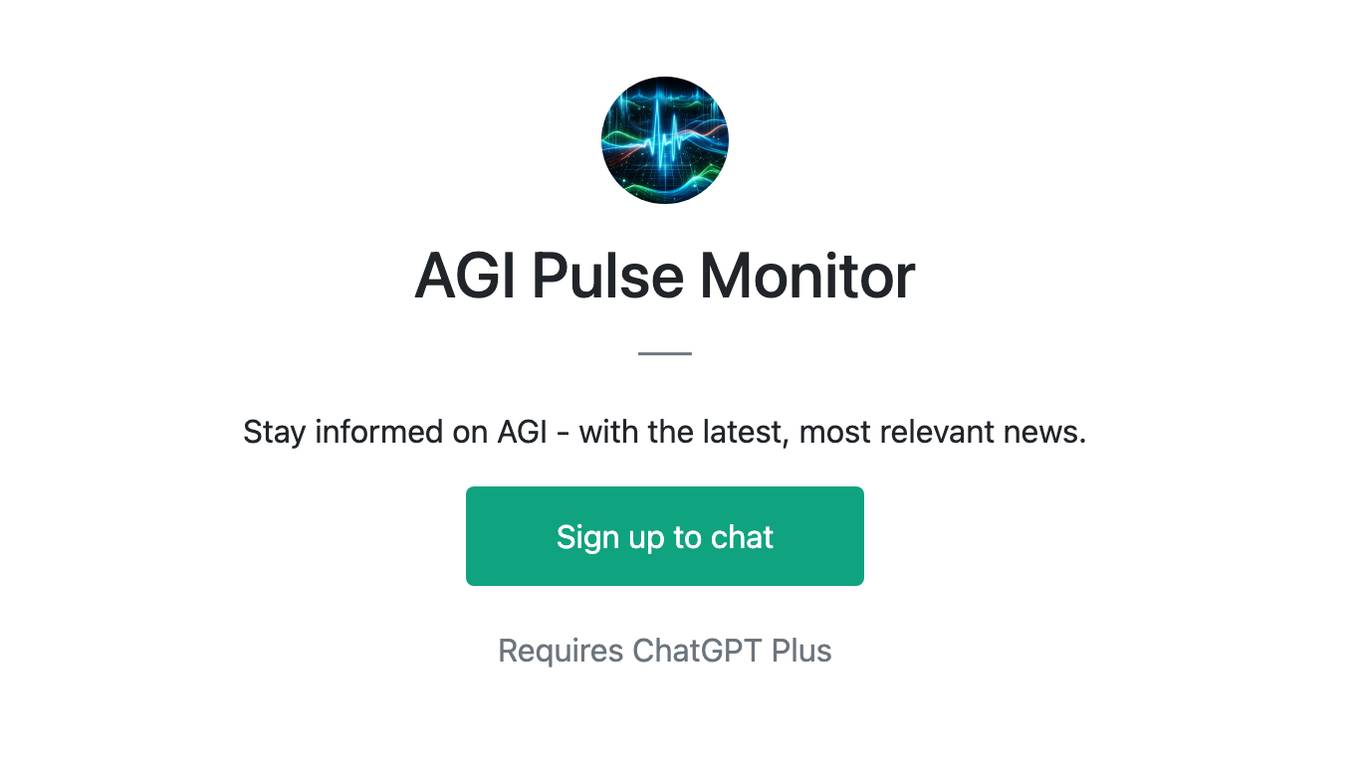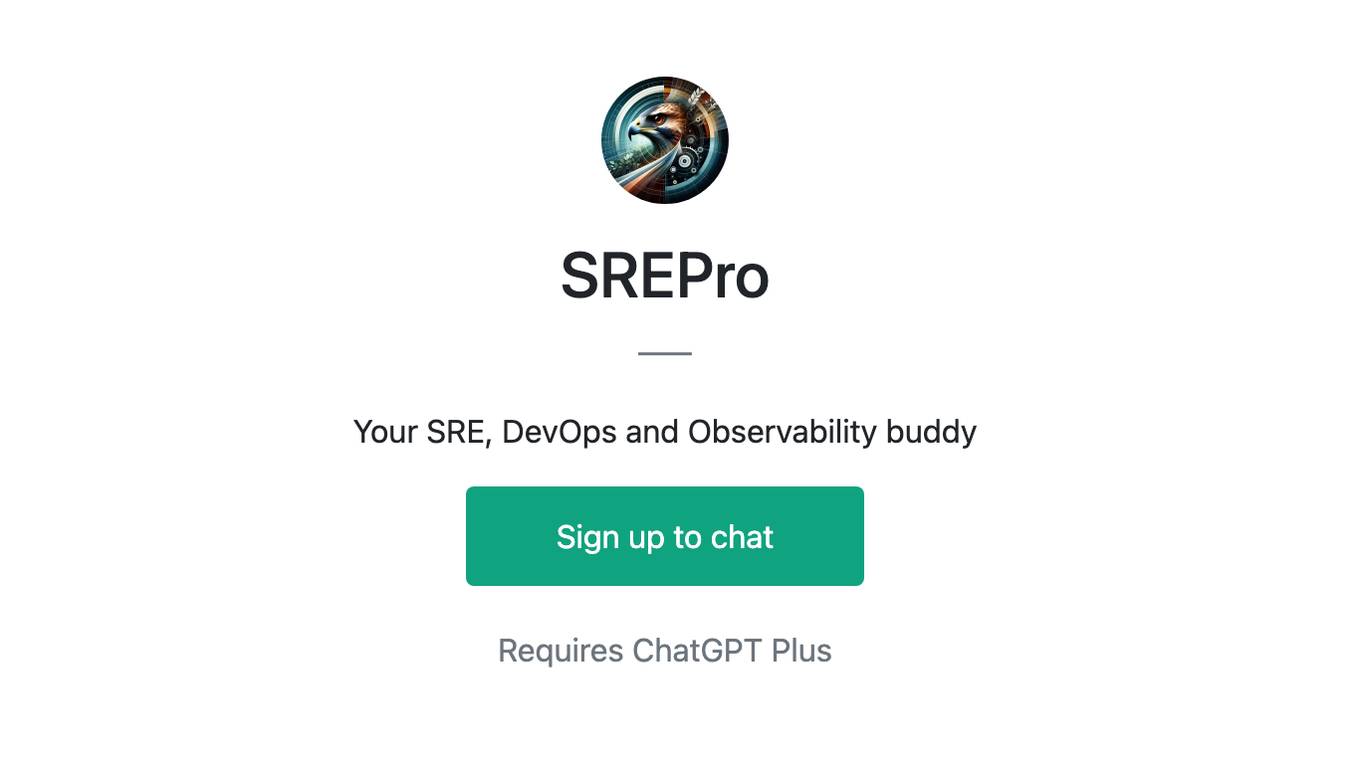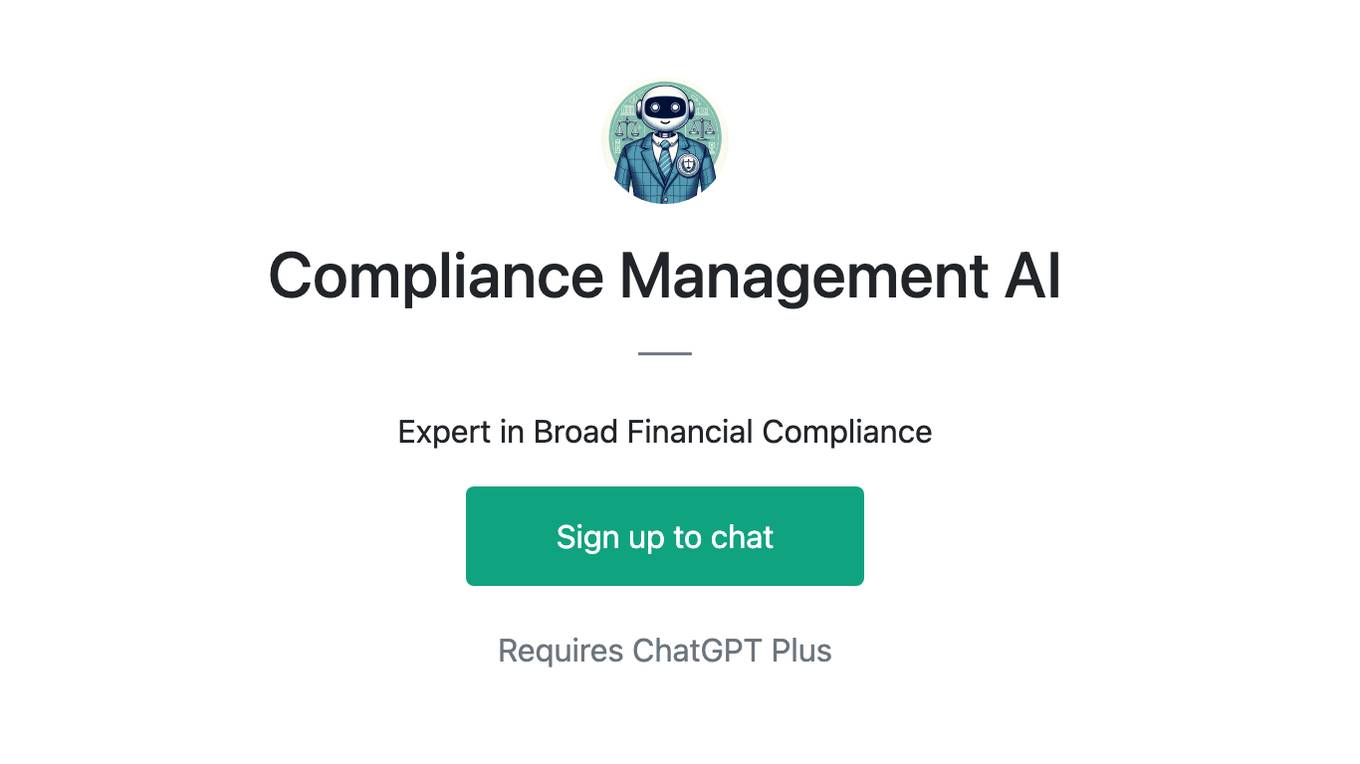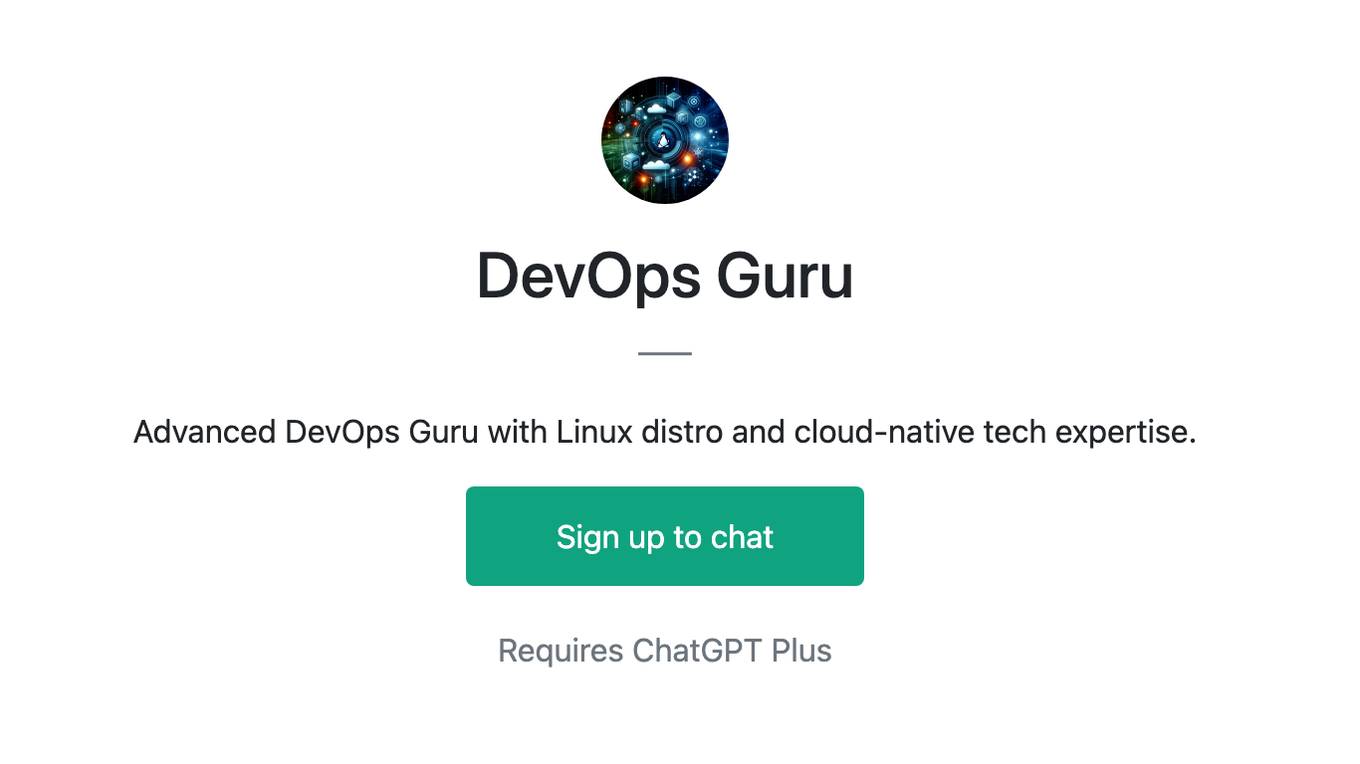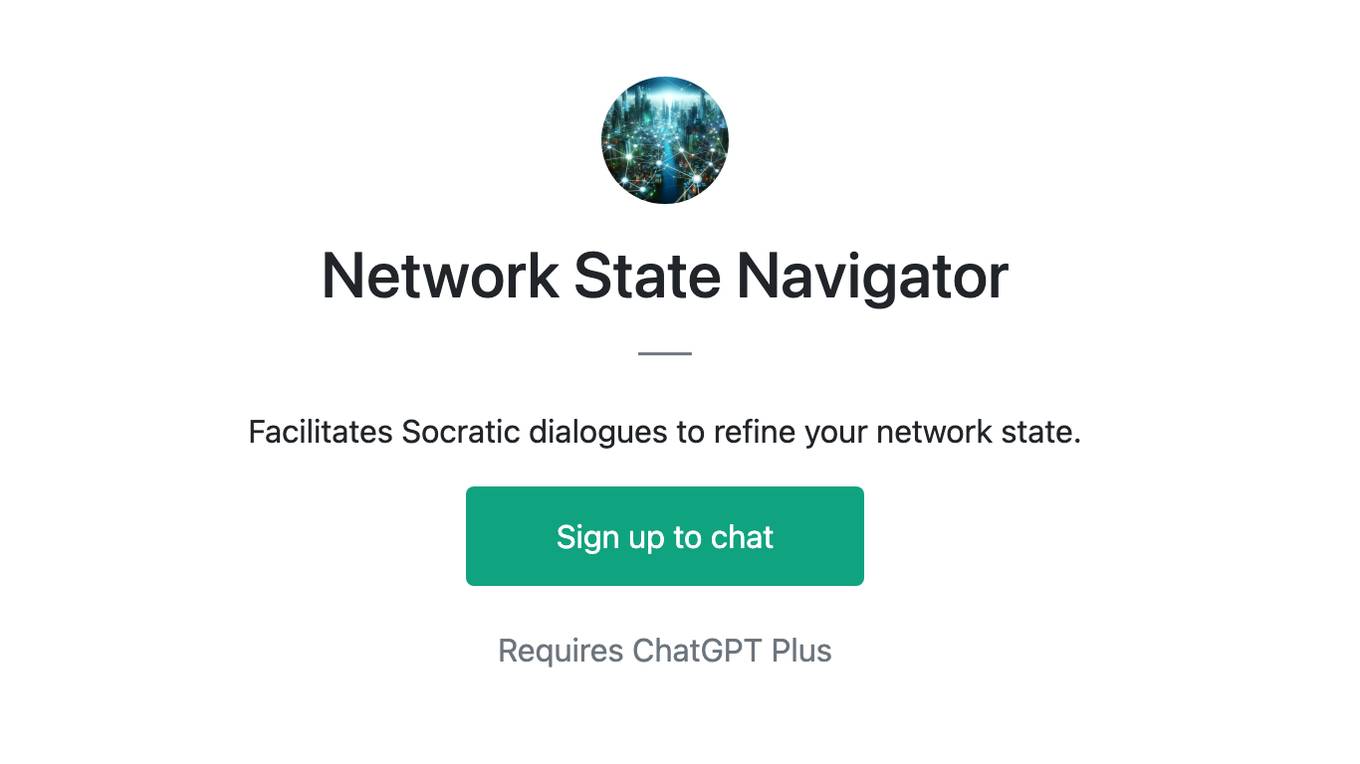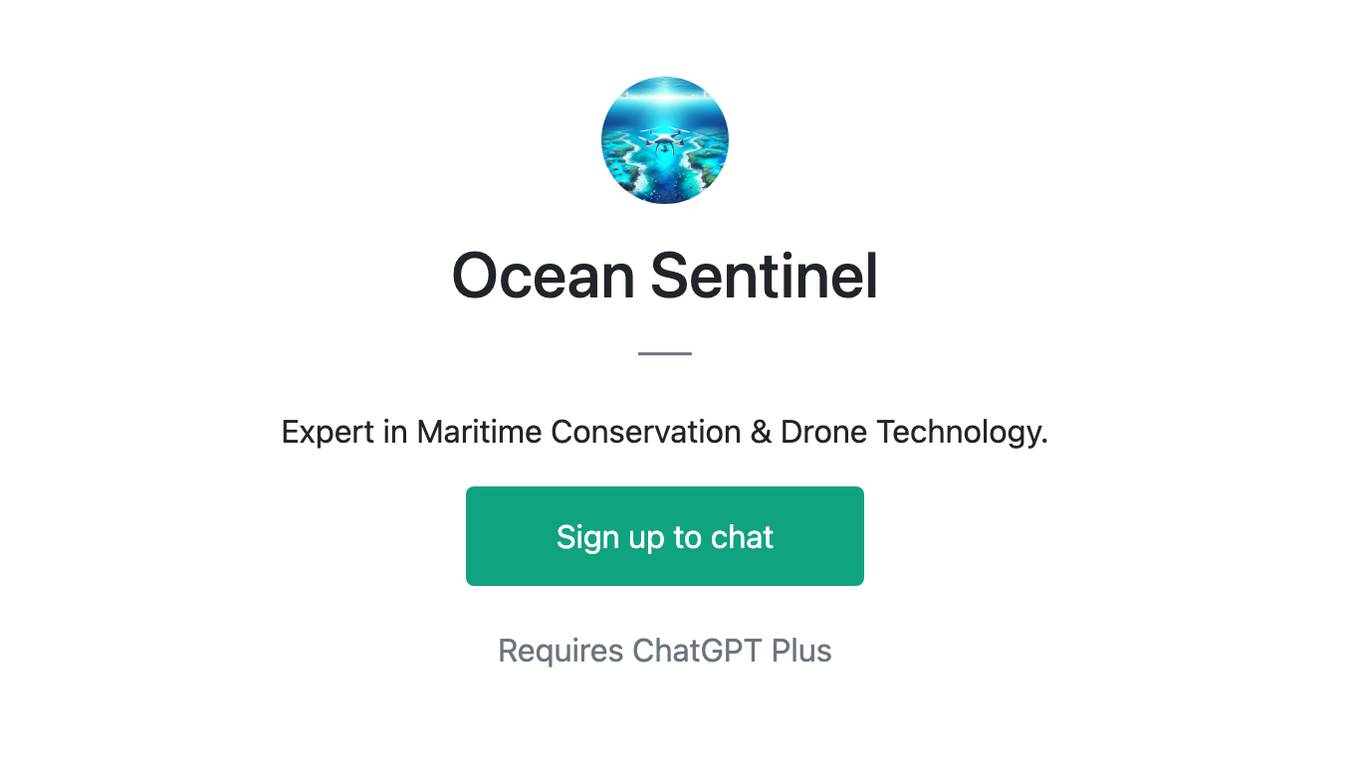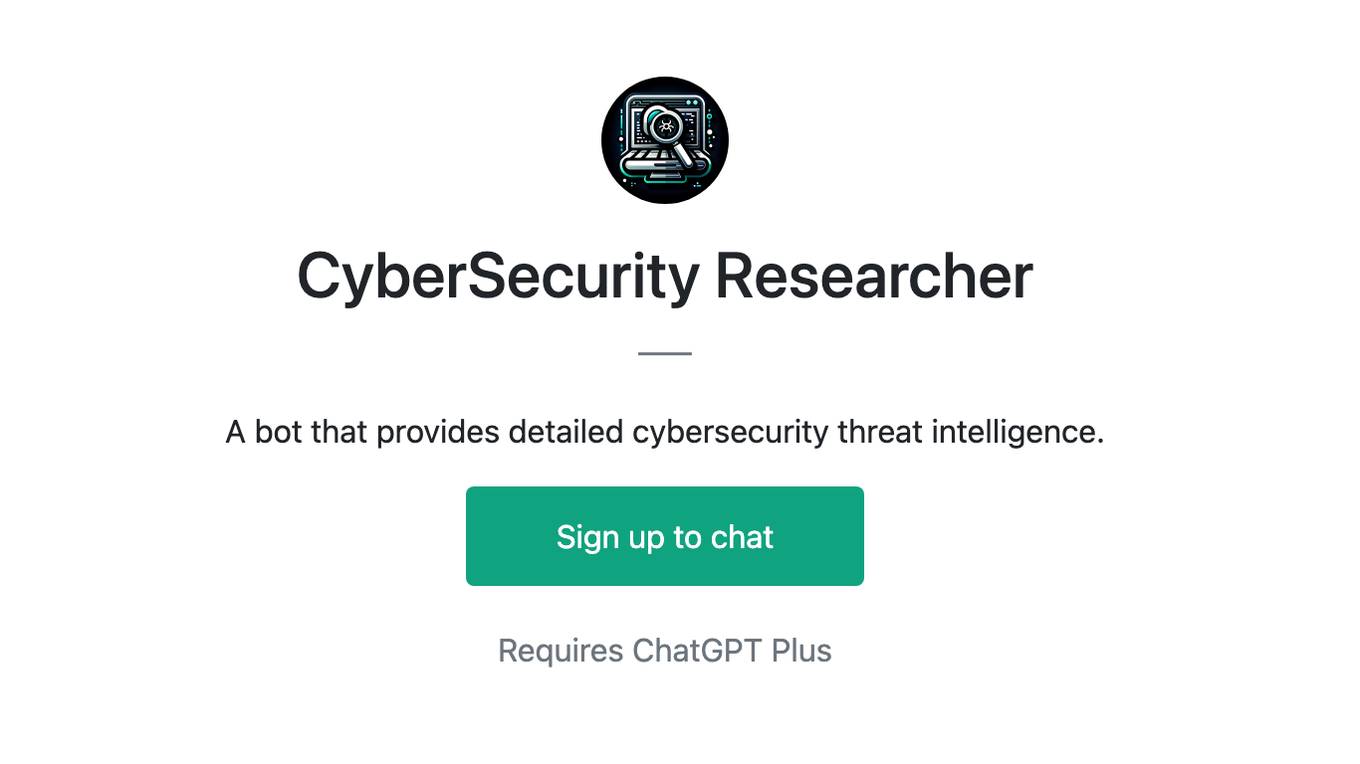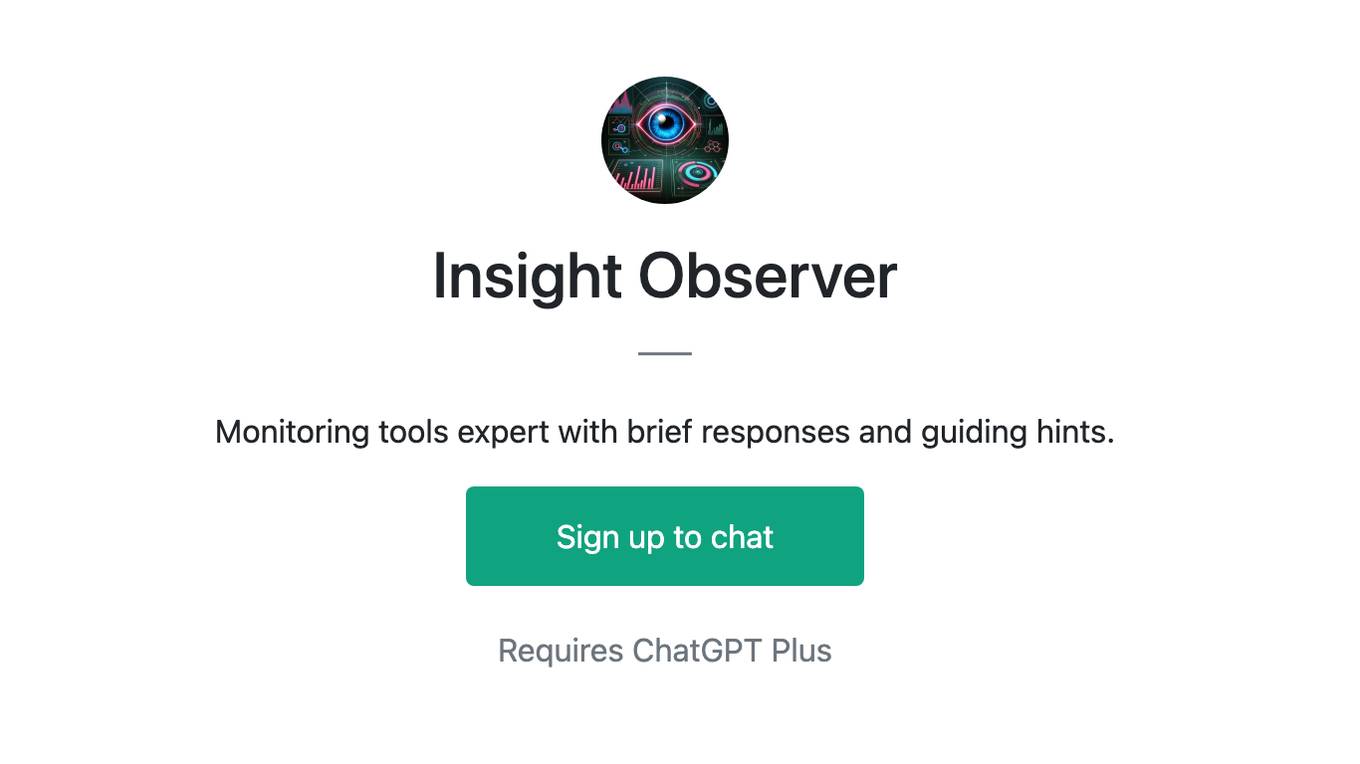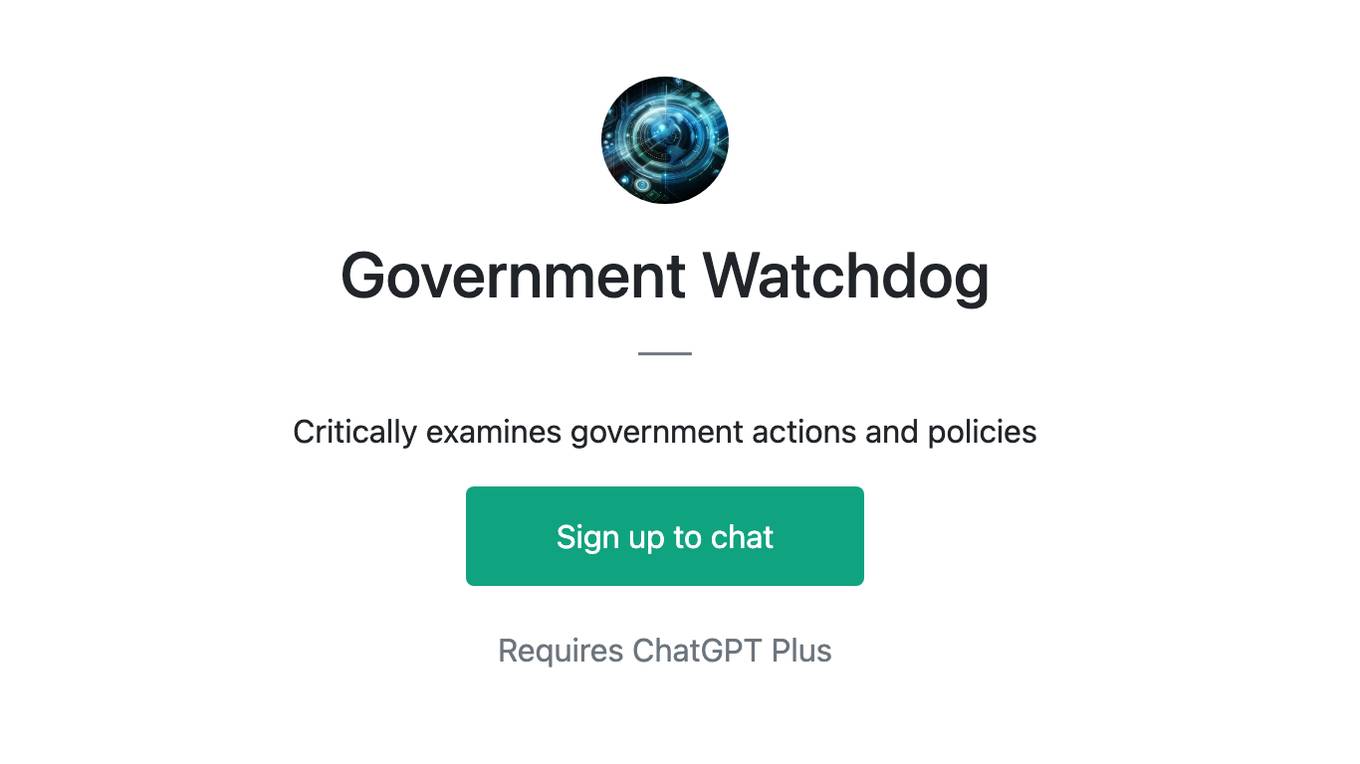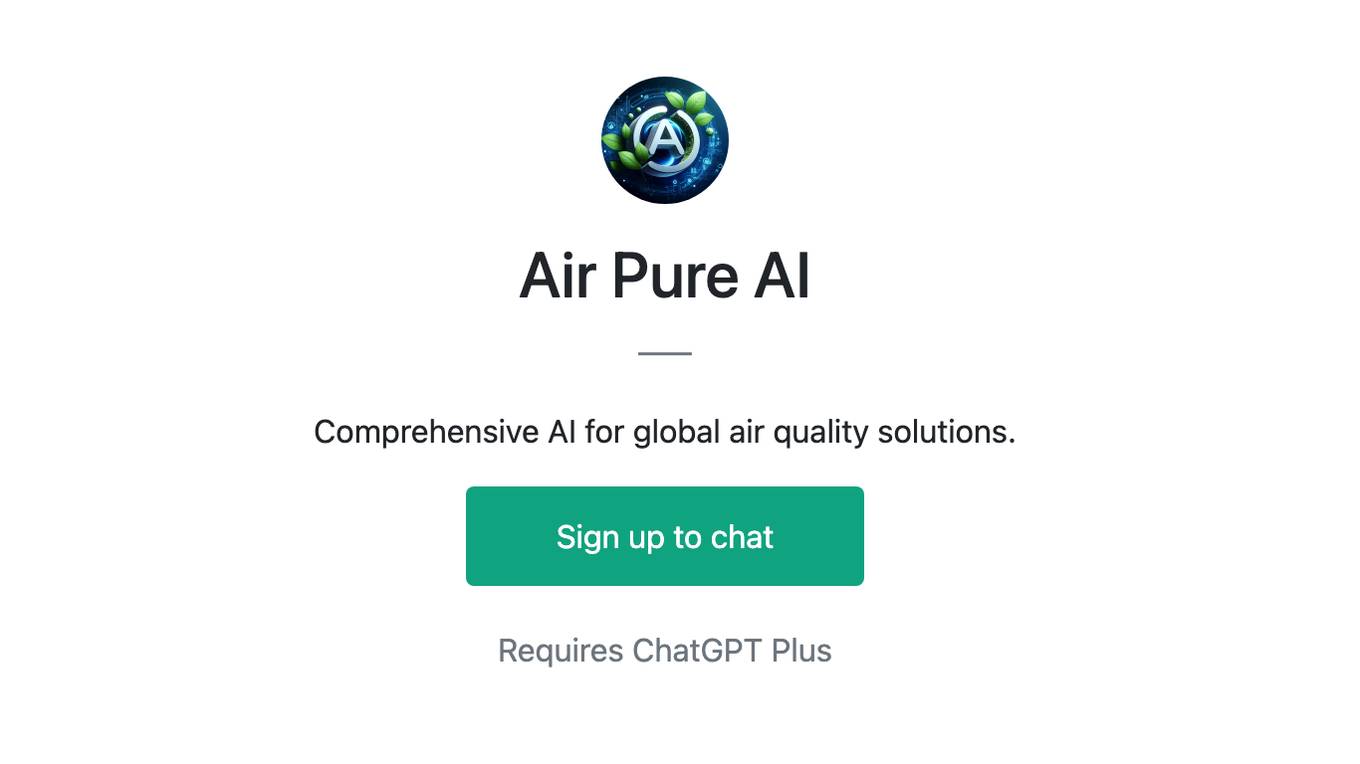Best AI tools for< Monitor Workflows >
20 - AI tool Sites
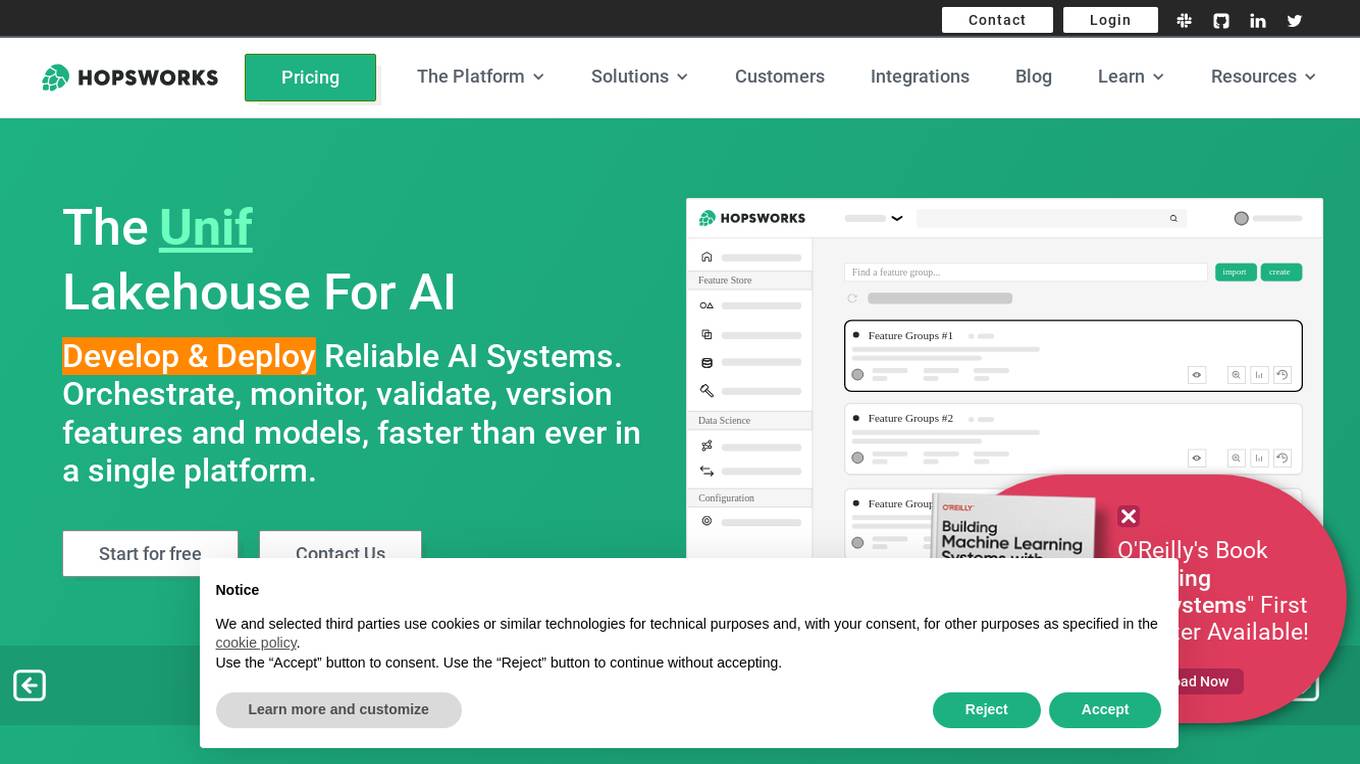
Hopsworks
Hopsworks is an AI platform that offers a comprehensive solution for building, deploying, and monitoring machine learning systems. It provides features such as a Feature Store, real-time ML capabilities, and generative AI solutions. Hopsworks enables users to develop and deploy reliable AI systems, orchestrate and monitor models, and personalize machine learning models with private data. The platform supports batch and real-time ML tasks, with the flexibility to deploy on-premises or in the cloud.

Confident AI
Confident AI is an open-source evaluation infrastructure for Large Language Models (LLMs). It provides a centralized platform to judge LLM applications, ensuring substantial benefits and addressing any weaknesses in LLM implementation. With Confident AI, companies can define ground truths to ensure their LLM is behaving as expected, evaluate performance against expected outputs to pinpoint areas for iterations, and utilize advanced diff tracking to guide towards the optimal LLM stack. The platform offers comprehensive analytics to identify areas of focus and features such as A/B testing, evaluation, output classification, reporting dashboard, dataset generation, and detailed monitoring to help productionize LLMs with confidence.
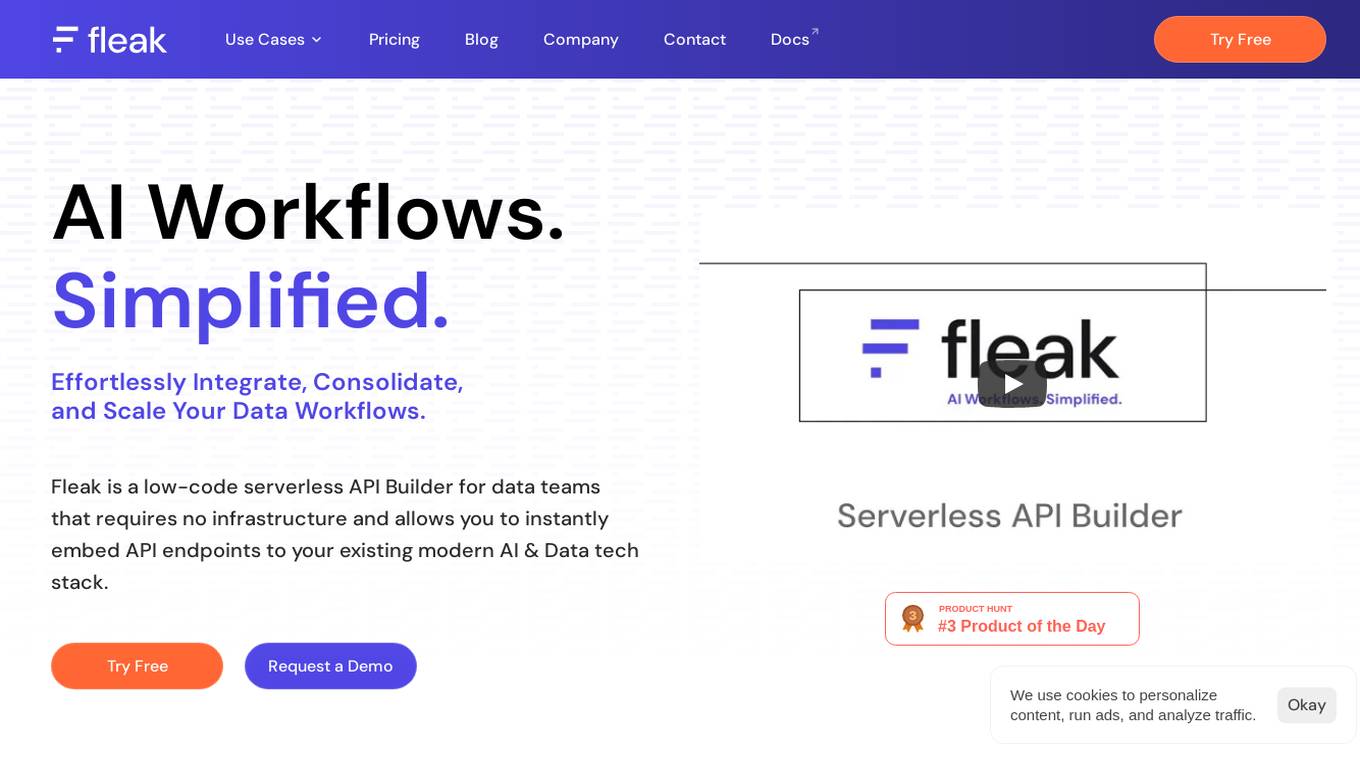
Fleak AI Workflows
Fleak AI Workflows is a low-code serverless API Builder designed for data teams to effortlessly integrate, consolidate, and scale their data workflows. It simplifies the process of creating, connecting, and deploying workflows in minutes, offering intuitive tools to handle data transformations and integrate AI models seamlessly. Fleak enables users to publish, manage, and monitor APIs effortlessly, without the need for infrastructure requirements. It supports various data types like JSON, SQL, CSV, and Plain Text, and allows integration with large language models, databases, and modern storage technologies.
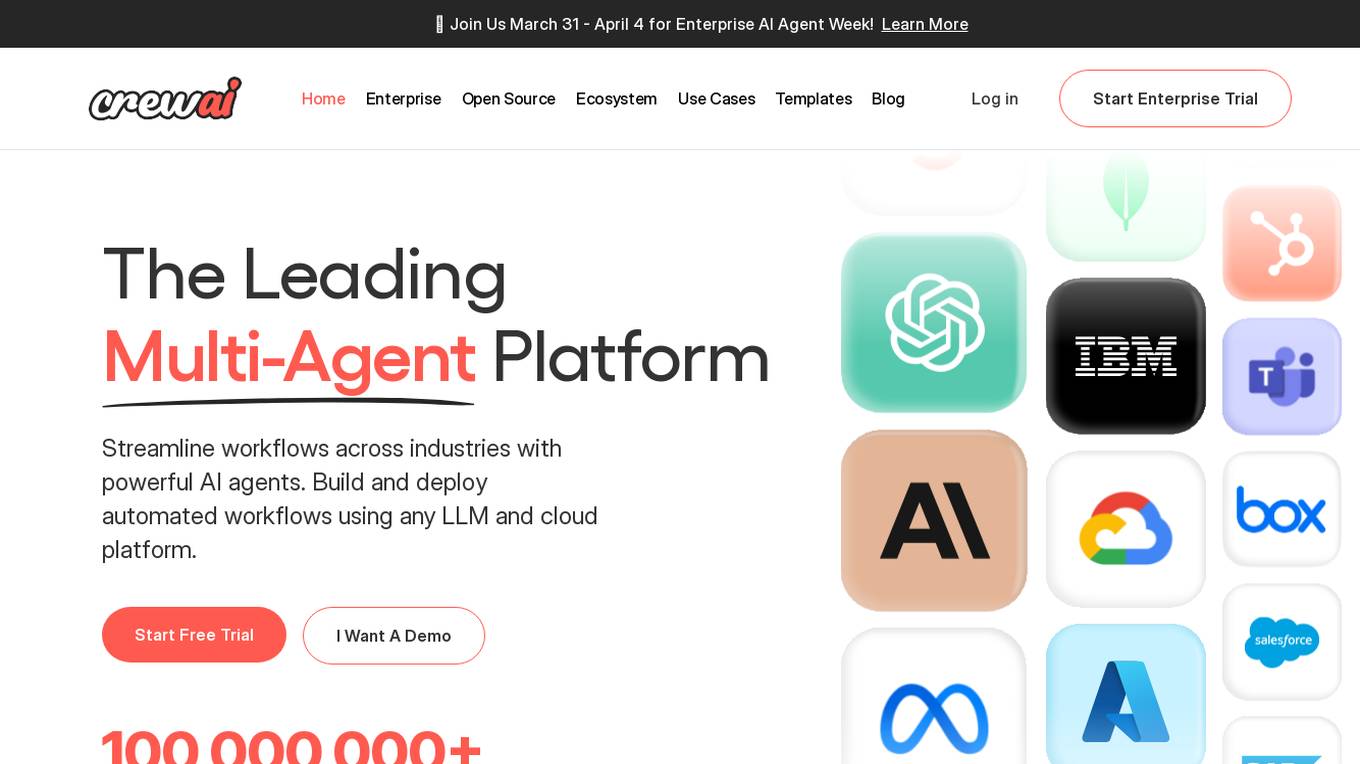
CrewAI
CrewAI is a leading multi-agent platform that enables users to streamline workflows across industries with powerful AI agents. Users can build and deploy automated workflows using any LLM and cloud platform. The platform offers tools for building, deploying, monitoring, and improving AI agents, providing complete visibility and control over automation processes. CrewAI is trusted by industry leaders and used in over 60 countries, offering a comprehensive solution for multi-agent automation.

Warestack
Warestack is an AI-powered cloud workflow automation platform that helps users manage all daily workflow operations with AI-powered observability. It allows users to monitor workflow runs from a single dashboard, speed up releases with one-click resolutions, and gain actionable insights. Warestack streamlines workflow runs, eliminates manual processes complexity, automates workflow operations with a copilot, and boosts runs with self-hosted runners at infrastructure cost. The platform leverages generative AI and deep-tech to enhance and automate workflow processes, ensuring consistent documentation and team productivity.
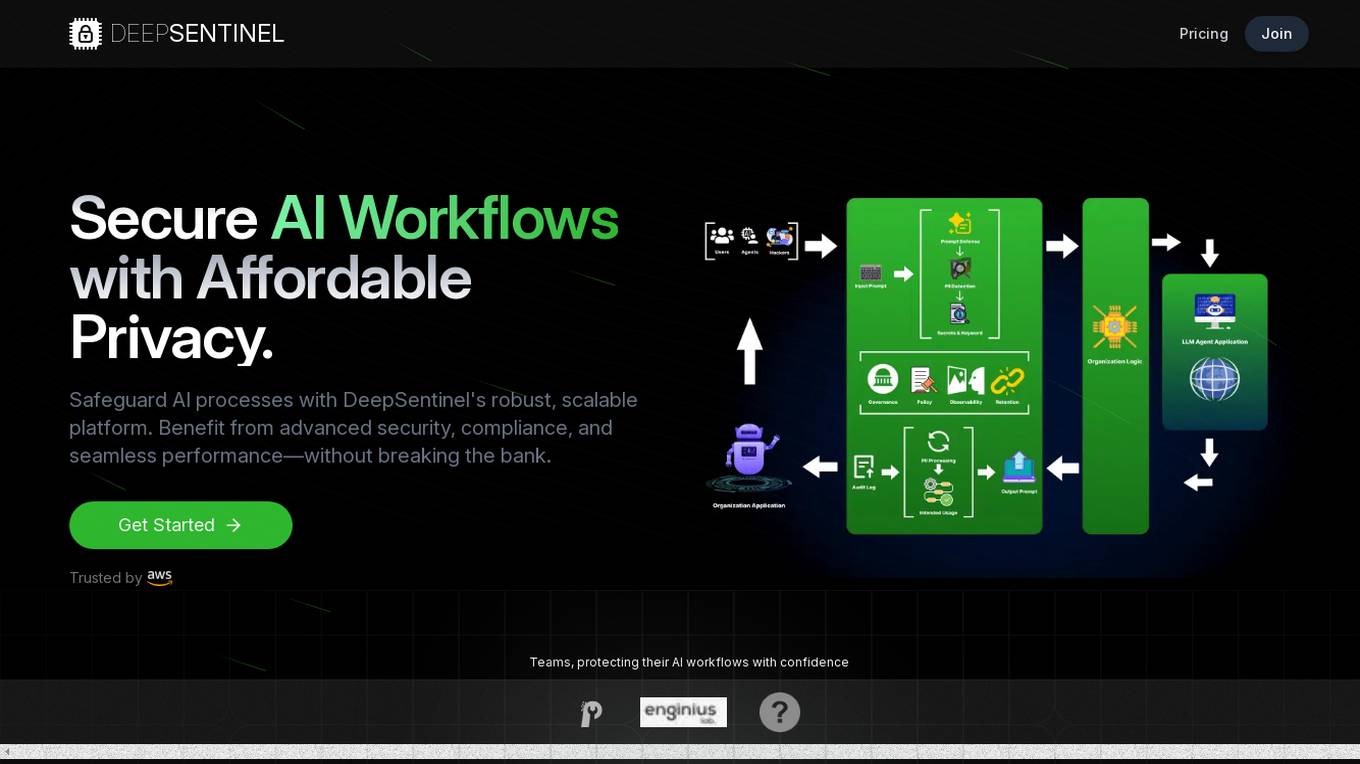
DeepSentinel
DeepSentinel is an AI application that provides secure AI workflows with affordable deep data privacy. It offers a robust, scalable platform for safeguarding AI processes with advanced security, compliance, and seamless performance. The platform allows users to track, protect, and control their AI workflows, ensuring secure and efficient operations. DeepSentinel also provides real-time threat monitoring, granular control, and global trust for securing sensitive data and ensuring compliance with international regulations.
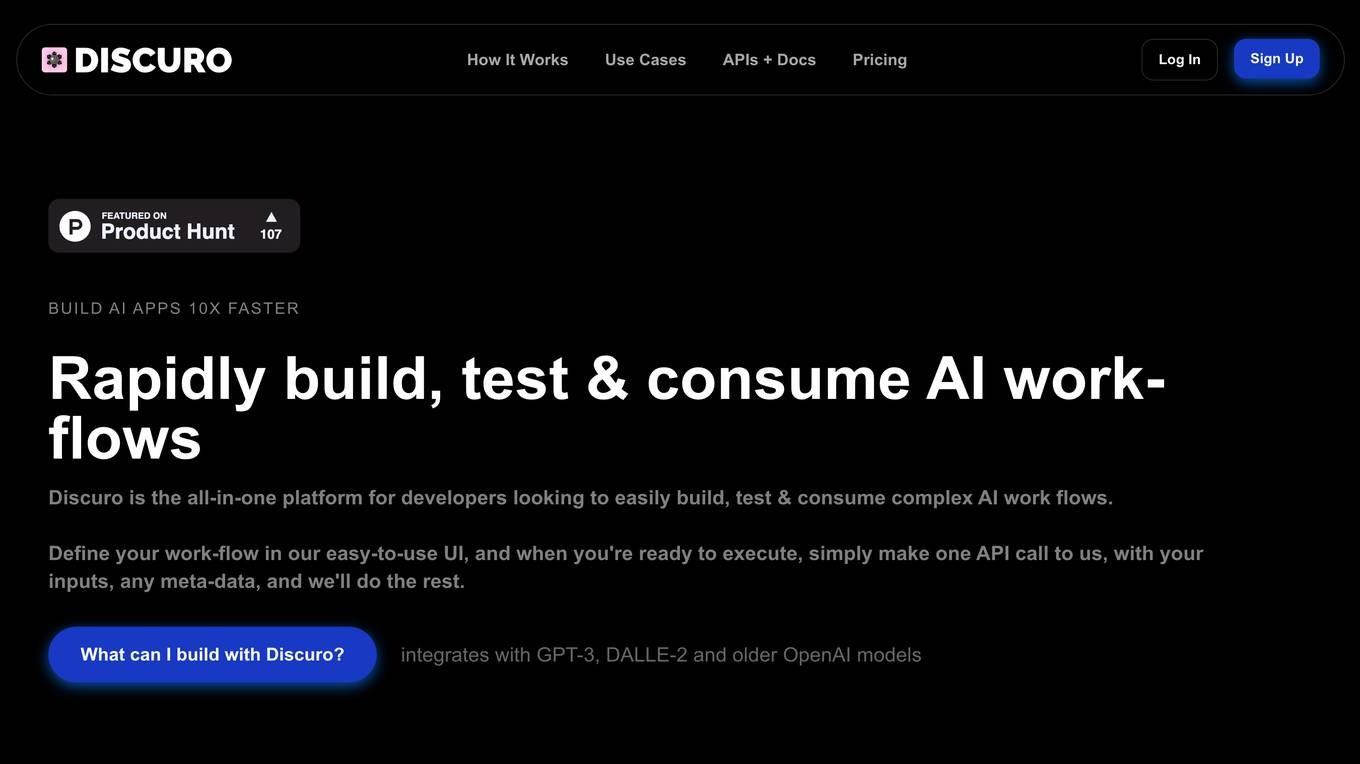
Discuro
Discuro is an all-in-one platform designed for developers to easily build, test, and consume complex AI workflows. It integrates with GPT-3, DALLE-2, and older OpenAI models, allowing users to chain prompts together in powerful ways. With Discuro, users can define their workflows in an easy-to-use UI and execute them with a single API call. The platform enables users to build and test complex self-transforming AI workflows and data sets, monitor AI usage, and generate completions efficiently.
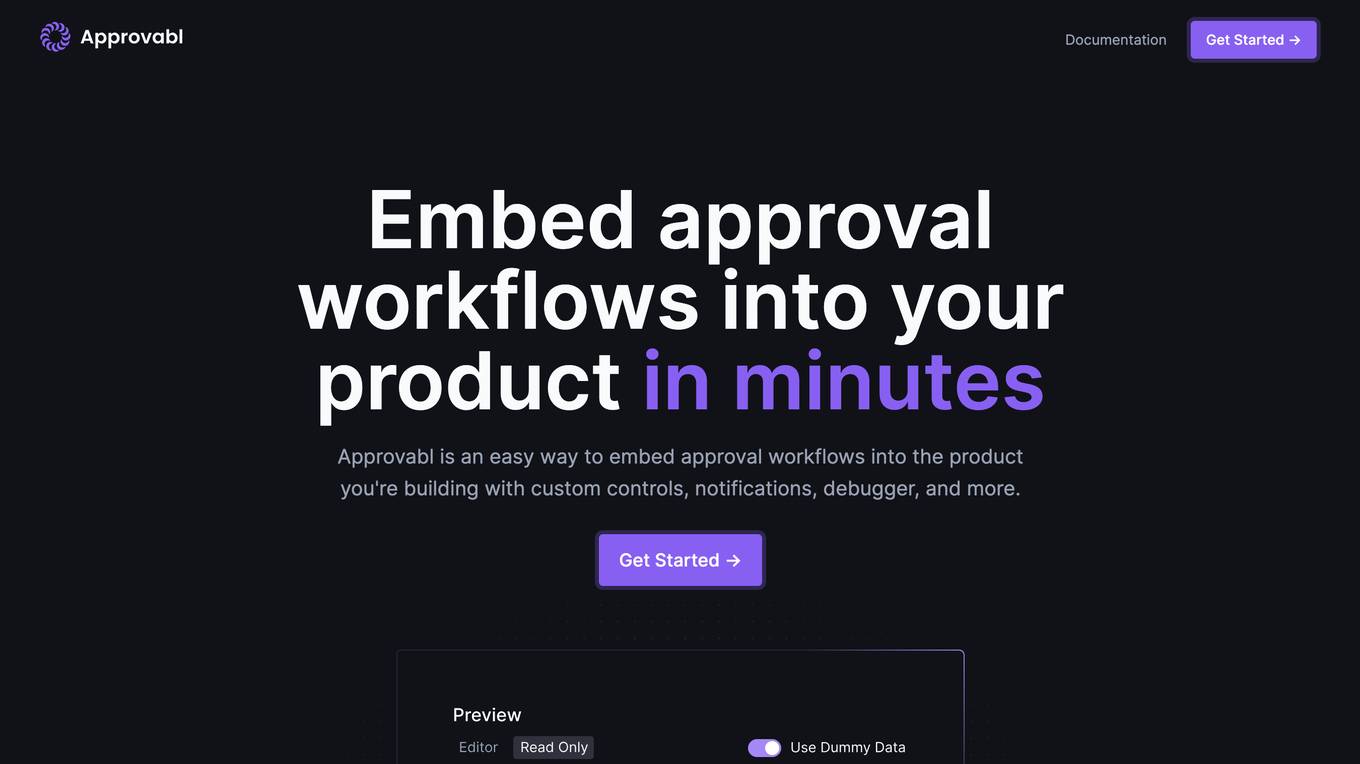
ForbiddenGuard
The website is currently displaying a '403 Forbidden' error, which indicates that the server is refusing to respond to the request. This error message is typically shown when the server understands the request made by the client but refuses to fulfill it. The 'openresty' mentioned in the text is likely the web server software being used. It is important to troubleshoot and resolve the 403 Forbidden error to regain access to the desired content on the website.
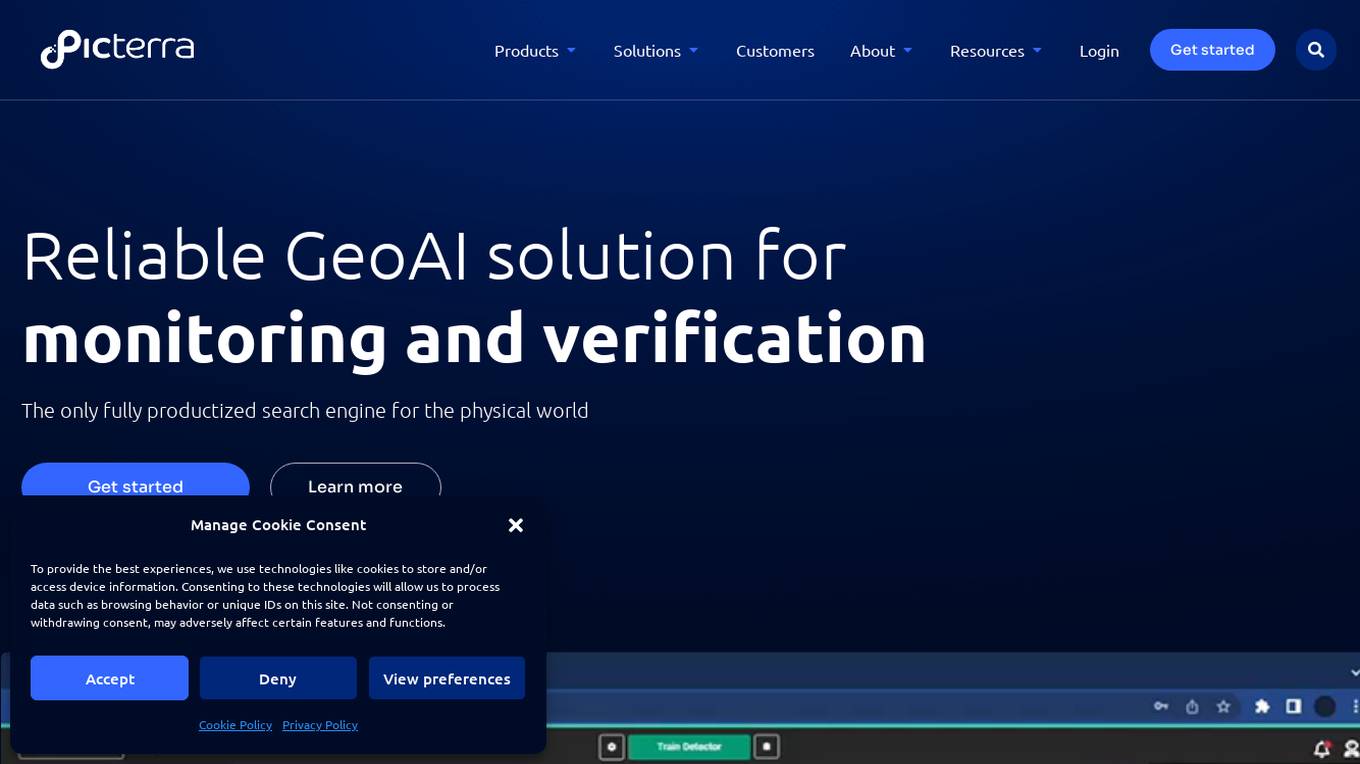
Picterra
Picterra is a geospatial AI platform that offers reliable solutions for sustainability, compliance, monitoring, and verification. It provides an all-in-one plot monitoring system, professional services, and interactive tours. Users can build custom AI models to detect objects, changes, or patterns using various geospatial imagery data. Picterra aims to revolutionize geospatial analysis with its category-leading AI technology, enabling users to solve challenges swiftly, collaborate more effectively, and scale further.

Samsara
Samsara is a leading provider of Connected Operations™ technology that connects people, systems, and data to give businesses visibility into every area of their operations. Samsara's platform includes a suite of products that help businesses improve safety, efficiency, and sustainability. Samsara's AI-powered video safety solutions provide real-time visibility into fleet operations, helping businesses to prevent accidents and protect their workforce. Samsara's fleet management solutions provide performance insights, asset protection, and live tracking for improved fleet productivity. Samsara's apps and workflows solutions provide customized driver experiences, real-time dispatch data, and streamlined ELD compliance. Samsara's site visibility solutions provide remote visibility, proactive alerting, and on-the-go access to data from remote sites.
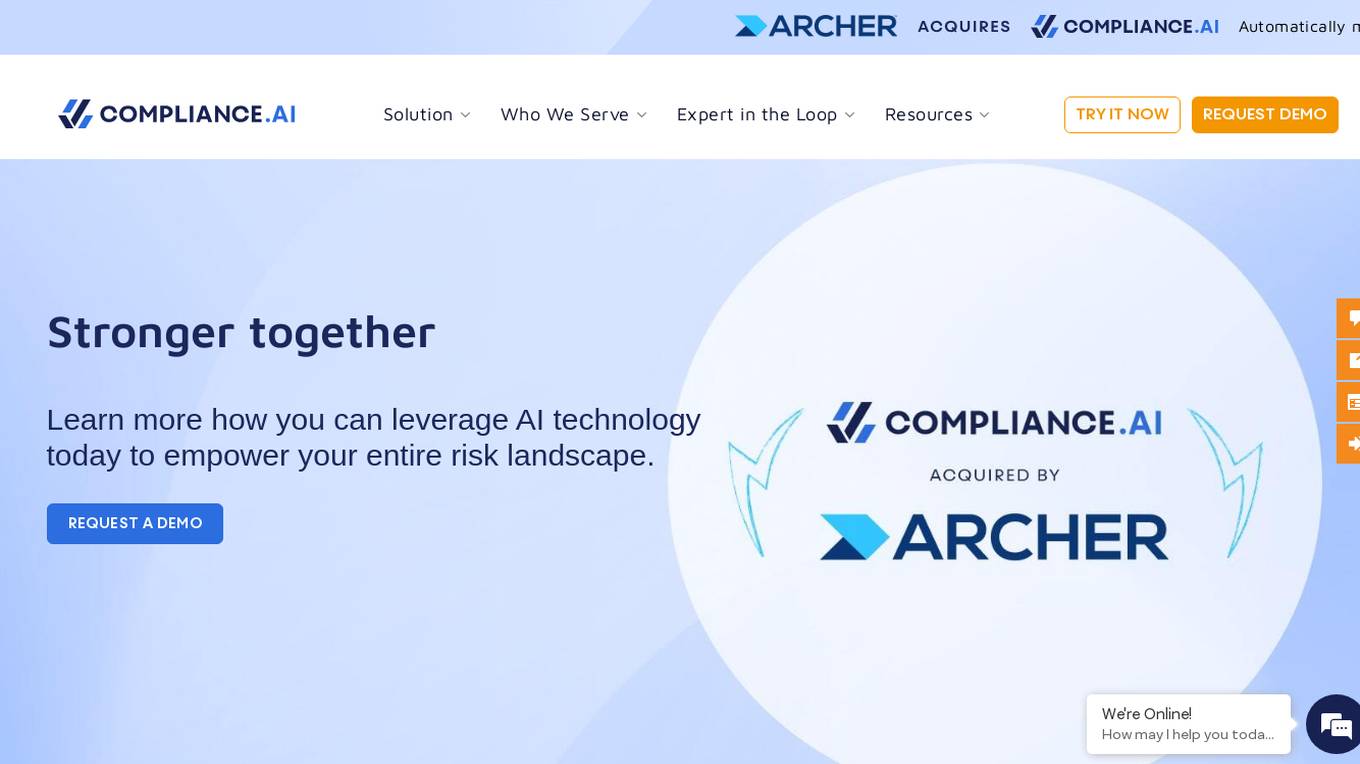
Compliance.ai
Compliance.ai is a regulatory compliance and risk management solution that leverages purpose-built machine learning models to automatically monitor regulatory updates and align them with internal policies, procedures, and controls. The platform ensures timely tracking, reaction, and reporting on impactful regulations and requirements, helping organizations mitigate risks, reduce costs, and increase confidence in compliance status. Compliance.ai offers a comprehensive suite of features and capabilities to streamline regulatory intelligence, impact analysis, change management, audit reporting, enforcement actions management, and more.
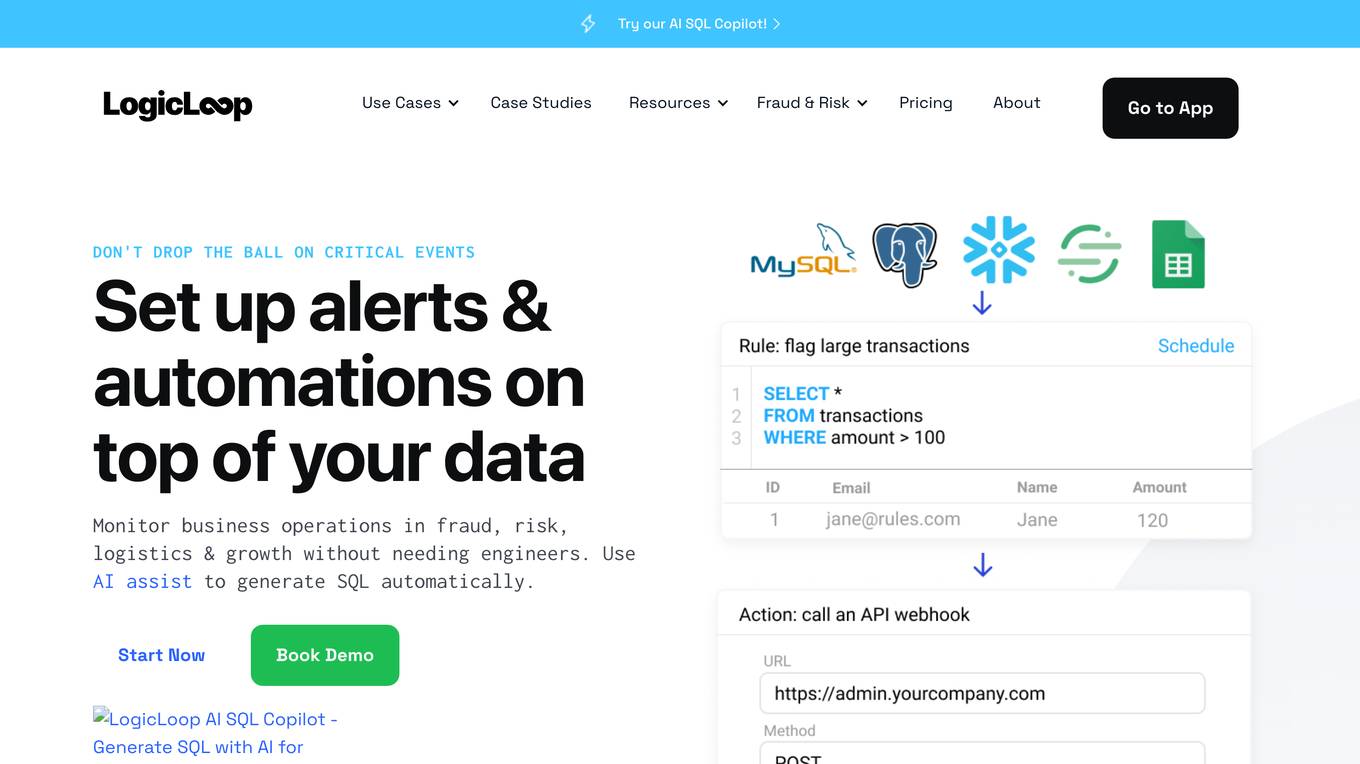
LogicLoop
LogicLoop is an all-in-one operations automation platform that allows users to set up alerts and automations on top of their data. It is designed to help businesses monitor their operations, identify risks, and take action to prevent problems. LogicLoop can be used by businesses of all sizes and industries, and it is particularly well-suited for businesses that are looking to improve their efficiency and reduce their risk.
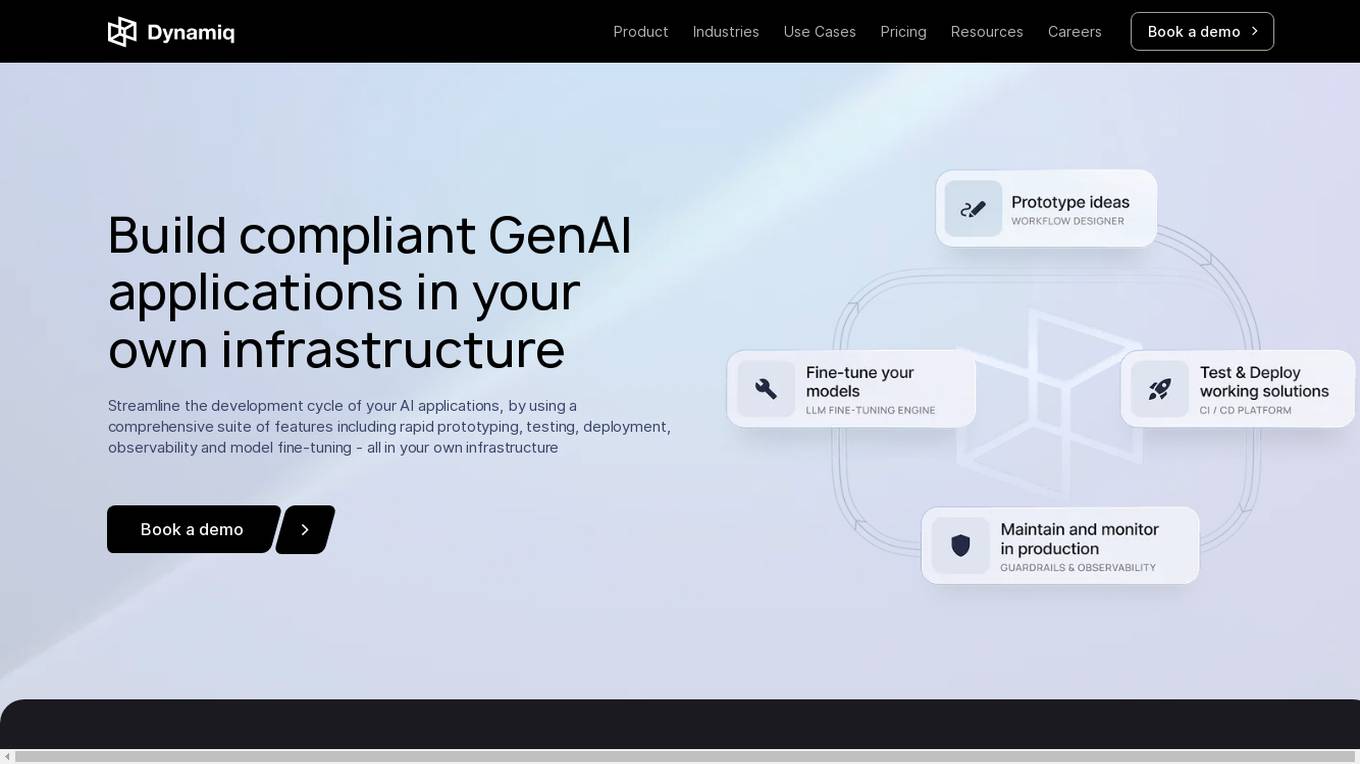
Dynamiq
Dynamiq is an operating platform for GenAI applications that enables users to build compliant GenAI applications in their own infrastructure. It offers a comprehensive suite of features including rapid prototyping, testing, deployment, observability, and model fine-tuning. The platform helps streamline the development cycle of AI applications and provides tools for workflow automations, knowledge base management, and collaboration. Dynamiq is designed to optimize productivity, reduce AI adoption costs, and empower organizations to establish AI ahead of schedule.
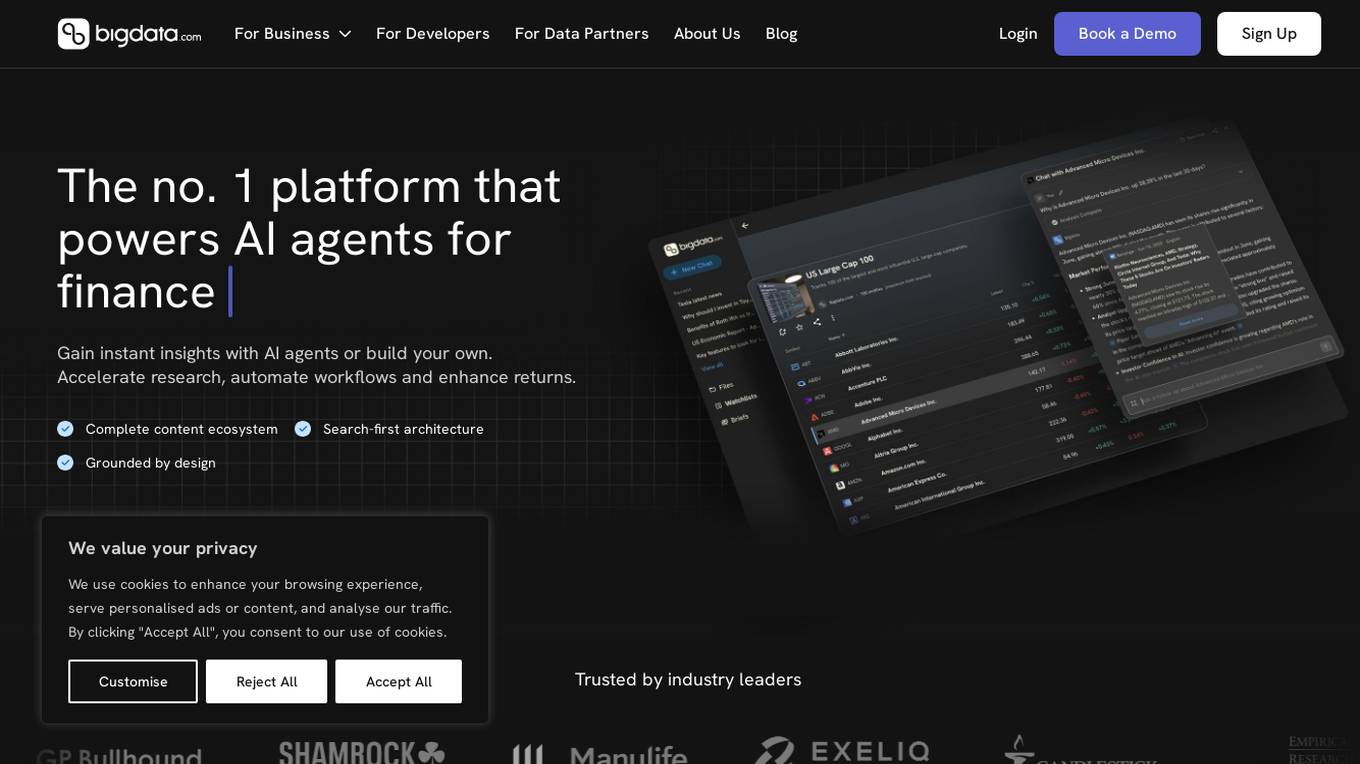
Bigdata.com
Bigdata.com is a platform that powers AI agents for finance, offering instant insights, accelerating research, automating workflows, and enhancing returns. It provides a complete data ecosystem, including a content store with web, paywalled, and internal data, and offers features like intelligent chat, market briefs, smart watchlists, and automated workflows. The platform is designed for investors, analysts, tech & innovation leaders, developers, and engineers in the finance industry, providing access to premium data, reliable search, and enterprise-grade governance.
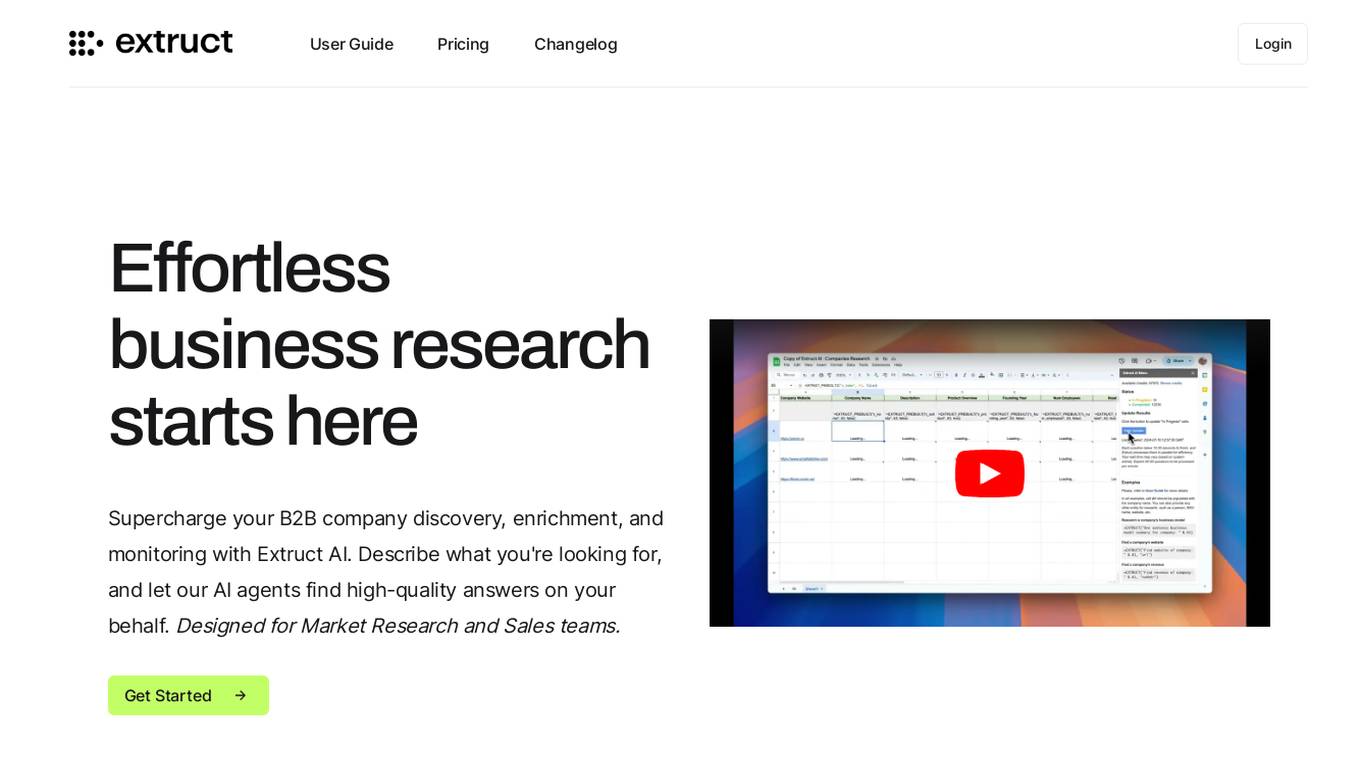
Extruct AI
Extruct AI is a Company Intelligence Platform that leverages AI technology to supercharge B2B company discovery, enrichment, and monitoring. It automates market research, lead generation, and competition analysis for Market Research and Sales teams. With autonomous AI agents, it provides high-quality answers, tailored market insights, and precise monitoring. Extruct AI offers a Company Discovery Engine, Flexible Data Enrichment, and Finetuned Models to streamline research workflows and access aggregated data sources. It ensures up-to-date data and hyper-customizable workflows for efficient business intelligence.
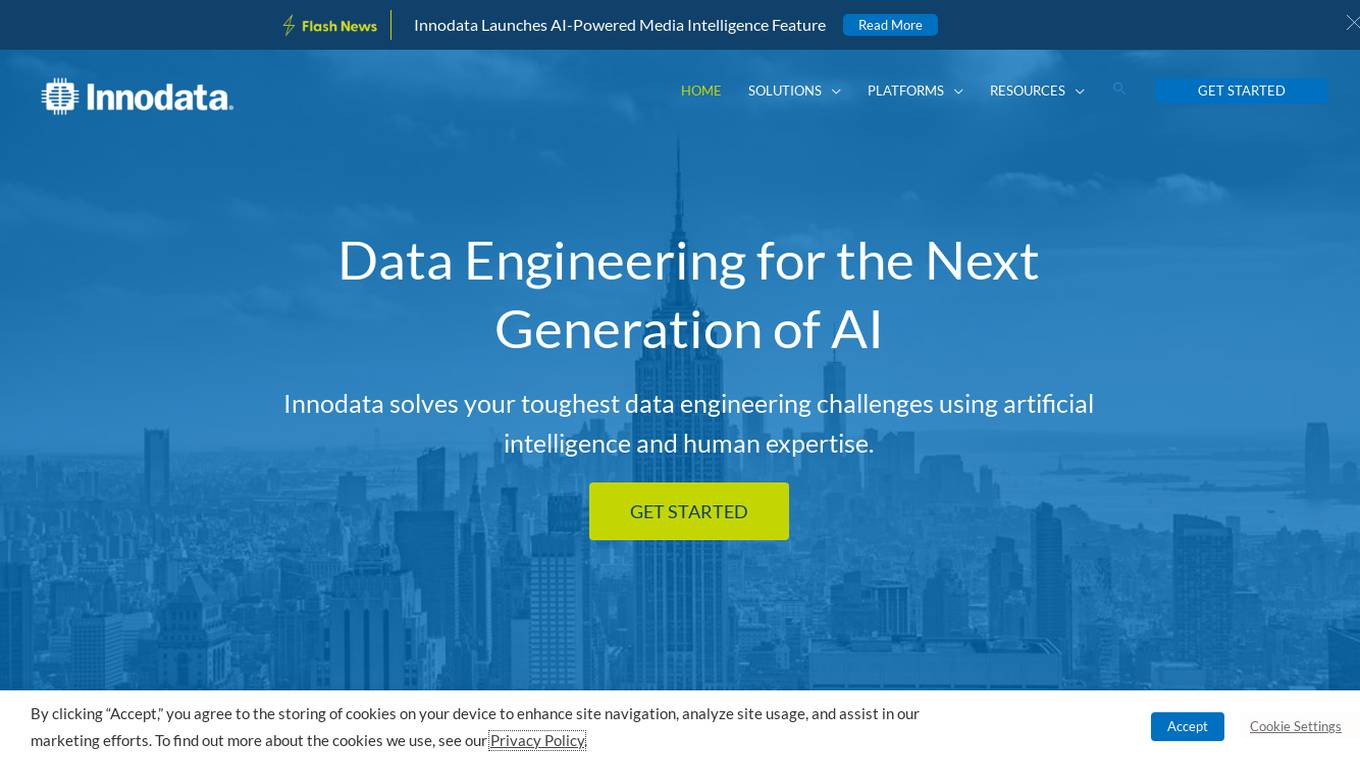
Innodata Inc.
Innodata Inc. is a global data engineering company that delivers AI-enabled software platforms and managed services for AI data collection/annotation, AI digital transformation, and industry-specific business processes. They provide a full-suite of services and products to power data-centric AI initiatives using artificial intelligence and human expertise. With a 30+ year legacy, they offer the highest quality data and outstanding service to their customers.
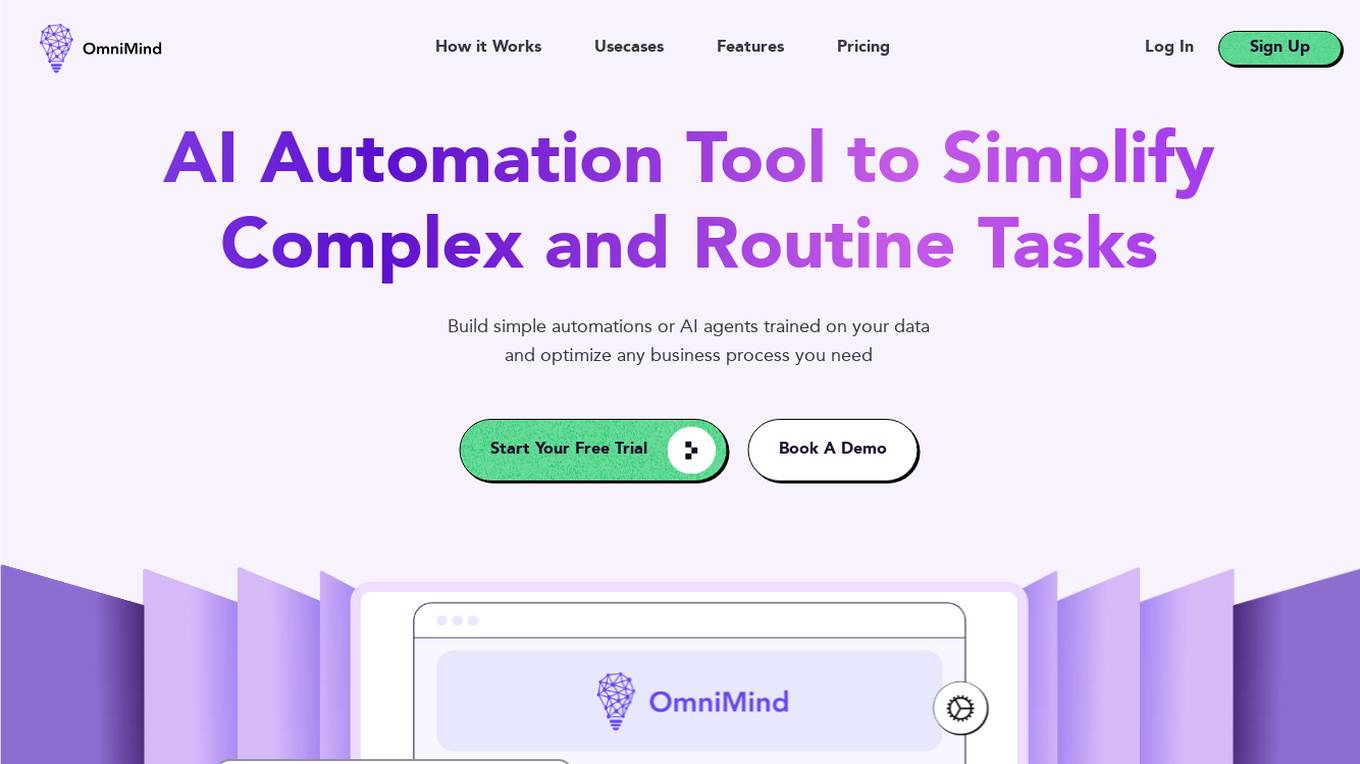
Omnimind
Omnimind is an AI automation tool designed to simplify complex and routine tasks by allowing users to build simple automations or AI agents trained on personalized data. It offers features such as training AI with personalized data, customizing AI appearance, tool integration, and monitoring conversations. Omnimind can be used for customer support, education, and sales assistance, providing benefits like quicker response times, personalized learning paths, and efficient lead qualification. However, it may have limitations in terms of technical complexity, customization options, and initial learning curve.
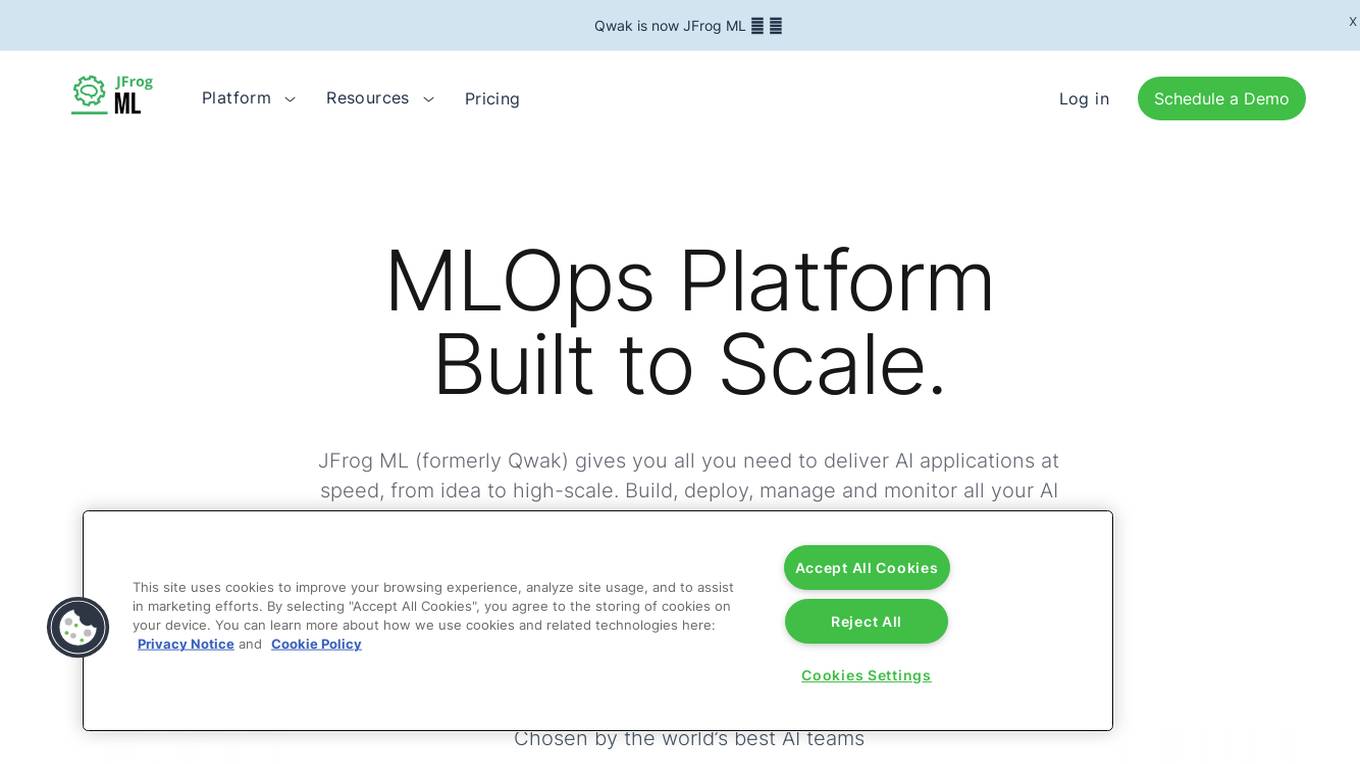
JFrog ML
JFrog ML is an AI platform designed to streamline AI development from prototype to production. It offers a unified MLOps platform to build, train, deploy, and manage AI workflows at scale. With features like Feature Store, LLMOps, and model monitoring, JFrog ML empowers AI teams to collaborate efficiently and optimize AI & ML models in production.
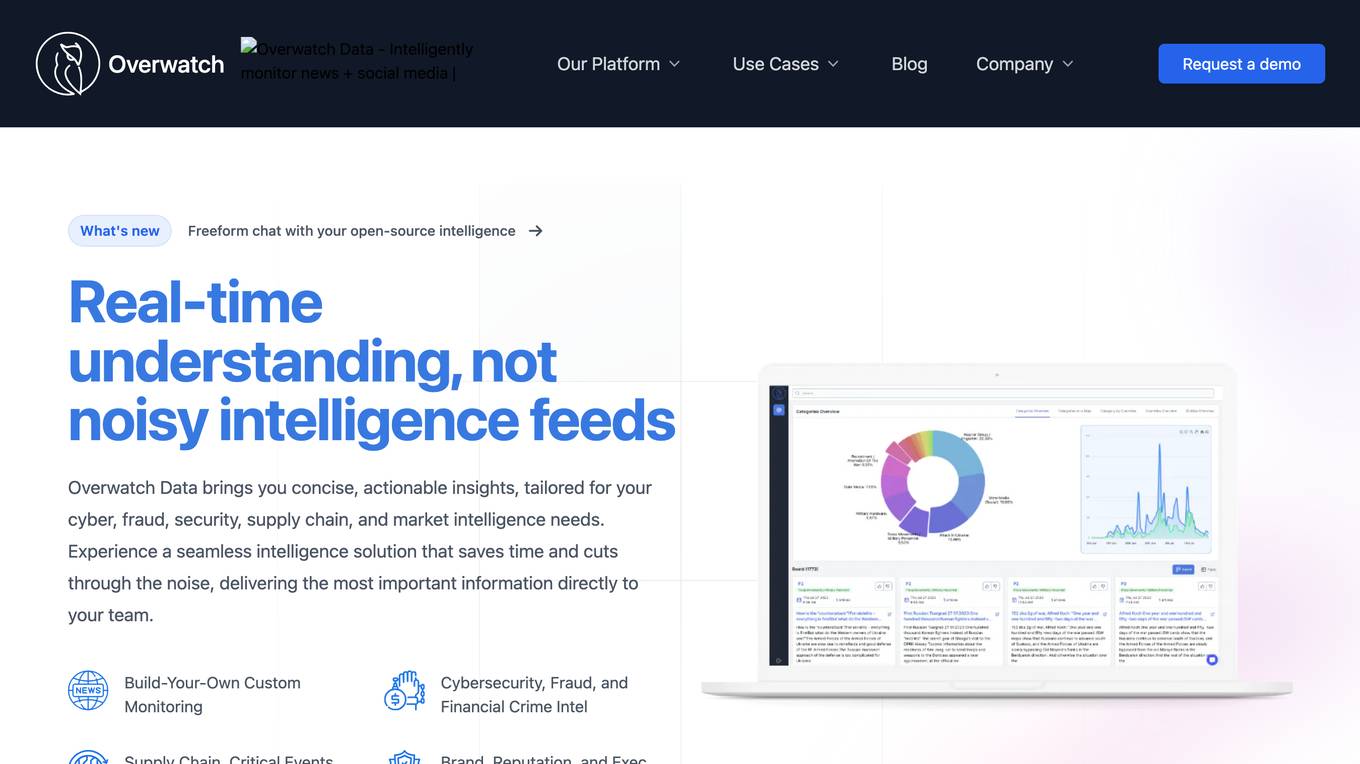
Overwatch Data
Overwatch Data is an AI-powered threat intelligence platform designed to provide fraud and cyber threat intelligence to businesses. The platform utilizes AI agents to monitor over 300k sources, including deep & dark web channels and social media platforms, to deliver real-time threat intelligence. Overwatch helps businesses prevent fraud campaigns, data breaches, and cyberattacks by providing personalized and contextualized intelligence. The platform offers customizable AI agents, tailored intelligence workflows, and context-rich alerts to enable fraud and security teams to respond quickly and confidently to threats.
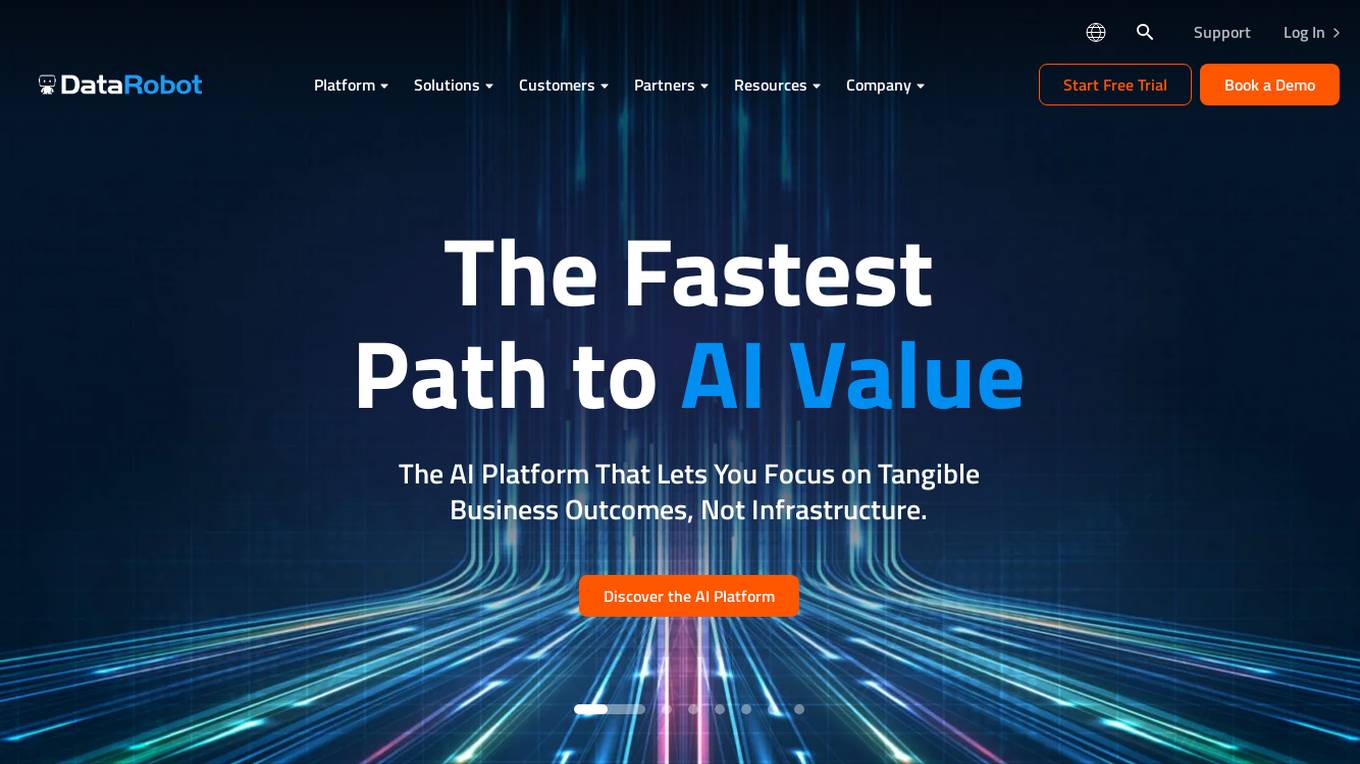
DataRobot
DataRobot is a leading provider of AI cloud platforms. It offers a range of AI tools and services to help businesses build, deploy, and manage AI models. DataRobot's platform is designed to make AI accessible to businesses of all sizes, regardless of their level of AI expertise. DataRobot's platform includes a variety of features to help businesses build and deploy AI models, including: * A drag-and-drop interface that makes it easy to build AI models, even for users with no coding experience. * A library of pre-built AI models that can be used to solve common business problems. * A set of tools to help businesses monitor and manage their AI models. * A team of AI experts who can provide support and guidance to businesses using the platform.
5 - Open Source AI Tools
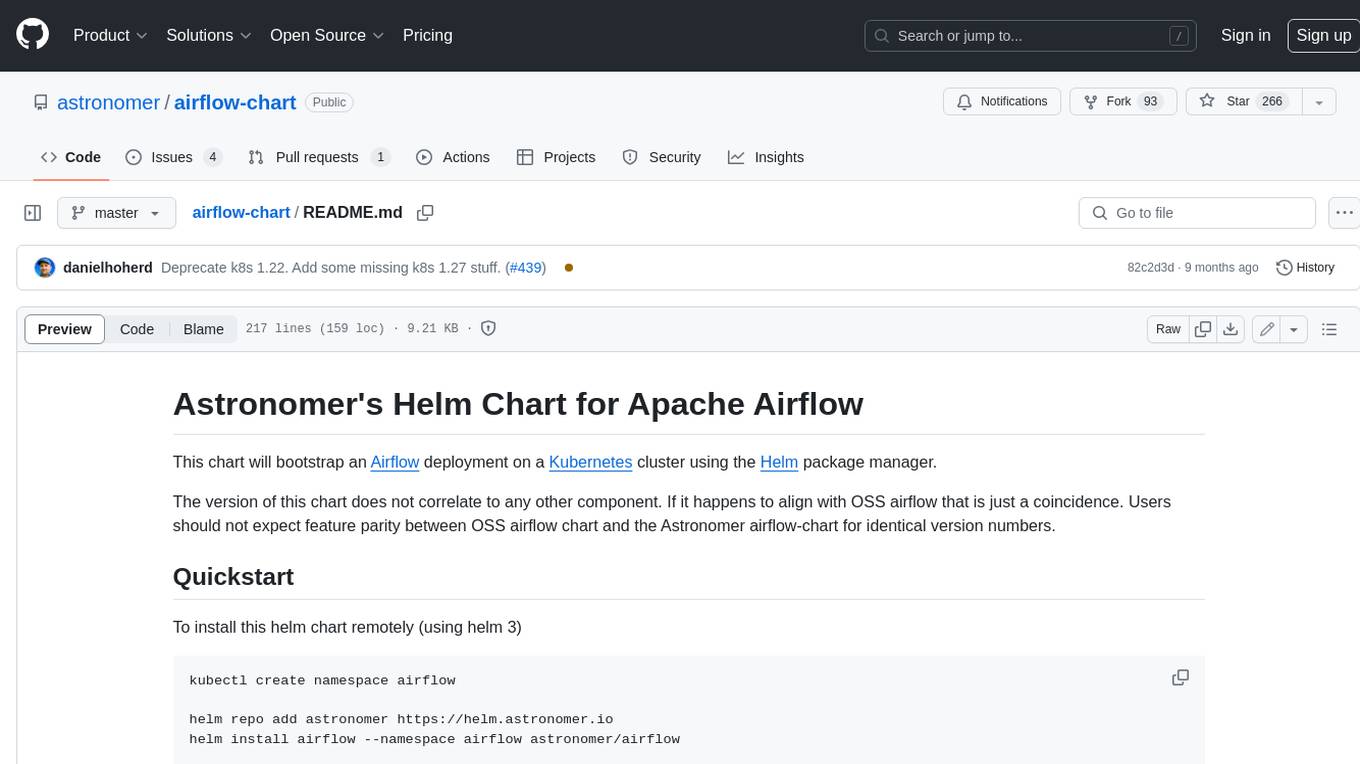
airflow-chart
This Helm chart bootstraps an Airflow deployment on a Kubernetes cluster using the Helm package manager. The version of this chart does not correlate to any other component. Users should not expect feature parity between OSS airflow chart and the Astronomer airflow-chart for identical version numbers. To install this helm chart remotely (using helm 3) kubectl create namespace airflow helm repo add astronomer https://helm.astronomer.io helm install airflow --namespace airflow astronomer/airflow To install this repository from source sh kubectl create namespace airflow helm install --namespace airflow . Prerequisites: Kubernetes 1.12+ Helm 3.6+ PV provisioner support in the underlying infrastructure Installing the Chart: sh helm install --name my-release . The command deploys Airflow on the Kubernetes cluster in the default configuration. The Parameters section lists the parameters that can be configured during installation. Upgrading the Chart: First, look at the updating documentation to identify any backwards-incompatible changes. To upgrade the chart with the release name `my-release`: sh helm upgrade --name my-release . Uninstalling the Chart: To uninstall/delete the `my-release` deployment: sh helm delete my-release The command removes all the Kubernetes components associated with the chart and deletes the release. Updating DAGs: Bake DAGs in Docker image The recommended way to update your DAGs with this chart is to build a new docker image with the latest code (`docker build -t my-company/airflow:8a0da78 .`), push it to an accessible registry (`docker push my-company/airflow:8a0da78`), then update the Airflow pods with that image: sh helm upgrade my-release . --set images.airflow.repository=my-company/airflow --set images.airflow.tag=8a0da78 Docker Images: The Airflow image that are referenced as the default values in this chart are generated from this repository: https://github.com/astronomer/ap-airflow. Other non-airflow images used in this chart are generated from this repository: https://github.com/astronomer/ap-vendor. Parameters: The complete list of parameters supported by the community chart can be found on the Parameteres Reference page, and can be set under the `airflow` key in this chart. The following tables lists the configurable parameters of the Astronomer chart and their default values. | Parameter | Description | Default | | :----------------------------- | :-------------------------------------------------------------------------------------------------------- | :---------------------------- | | `ingress.enabled` | Enable Kubernetes Ingress support | `false` | | `ingress.acme` | Add acme annotations to Ingress object | `false` | | `ingress.tlsSecretName` | Name of secret that contains a TLS secret | `~` | | `ingress.webserverAnnotations` | Annotations added to Webserver Ingress object | `{}` | | `ingress.flowerAnnotations` | Annotations added to Flower Ingress object | `{}` | | `ingress.baseDomain` | Base domain for VHOSTs | `~` | | `ingress.auth.enabled` | Enable auth with Astronomer Platform | `true` | | `extraObjects` | Extra K8s Objects to deploy (these are passed through `tpl`). More about Extra Objects. | `[]` | | `sccEnabled` | Enable security context constraints required for OpenShift | `false` | | `authSidecar.enabled` | Enable authSidecar | `false` | | `authSidecar.repository` | The image for the auth sidecar proxy | `nginxinc/nginx-unprivileged` | | `authSidecar.tag` | The image tag for the auth sidecar proxy | `stable` | | `authSidecar.pullPolicy` | The K8s pullPolicy for the the auth sidecar proxy image | `IfNotPresent` | | `authSidecar.port` | The port the auth sidecar exposes | `8084` | | `gitSyncRelay.enabled` | Enables git sync relay feature. | `False` | | `gitSyncRelay.repo.url` | Upstream URL to the git repo to clone. | `~` | | `gitSyncRelay.repo.branch` | Branch of the upstream git repo to checkout. | `main` | | `gitSyncRelay.repo.depth` | How many revisions to check out. Leave as default `1` except in dev where history is needed. | `1` | | `gitSyncRelay.repo.wait` | Seconds to wait before pulling from the upstream remote. | `60` | | `gitSyncRelay.repo.subPath` | Path to the dags directory within the git repository. | `~` | Specify each parameter using the `--set key=value[,key=value]` argument to `helm install`. For example, sh helm install --name my-release --set executor=CeleryExecutor --set enablePodLaunching=false . Walkthrough using kind: Install kind, and create a cluster We recommend testing with Kubernetes 1.25+, example: sh kind create cluster --image kindest/node:v1.25.11 Confirm it's up: sh kubectl cluster-info --context kind-kind Add Astronomer's Helm repo sh helm repo add astronomer https://helm.astronomer.io helm repo update Create namespace + install the chart sh kubectl create namespace airflow helm install airflow -n airflow astronomer/airflow It may take a few minutes. Confirm the pods are up: sh kubectl get pods --all-namespaces helm list -n airflow Run `kubectl port-forward svc/airflow-webserver 8080:8080 -n airflow` to port-forward the Airflow UI to http://localhost:8080/ to confirm Airflow is working. Login as _admin_ and password _admin_. Build a Docker image from your DAGs: 1. Start a project using astro-cli, which will generate a Dockerfile, and load your DAGs in. You can test locally before pushing to kind with `astro airflow start`. `sh mkdir my-airflow-project && cd my-airflow-project astro dev init` 2. Then build the image: `sh docker build -t my-dags:0.0.1 .` 3. Load the image into kind: `sh kind load docker-image my-dags:0.0.1` 4. Upgrade Helm deployment: sh helm upgrade airflow -n airflow --set images.airflow.repository=my-dags --set images.airflow.tag=0.0.1 astronomer/airflow Extra Objects: This chart can deploy extra Kubernetes objects (assuming the role used by Helm can manage them). For Astronomer Cloud and Enterprise, the role permissions can be found in the Commander role. yaml extraObjects: - apiVersion: batch/v1beta1 kind: CronJob metadata: name: "{{ .Release.Name }}-somejob" spec: schedule: "*/10 * * * *" concurrencyPolicy: Forbid jobTemplate: spec: template: spec: containers: - name: myjob image: ubuntu command: - echo args: - hello restartPolicy: OnFailure Contributing: Check out our contributing guide! License: Apache 2.0 with Commons Clause
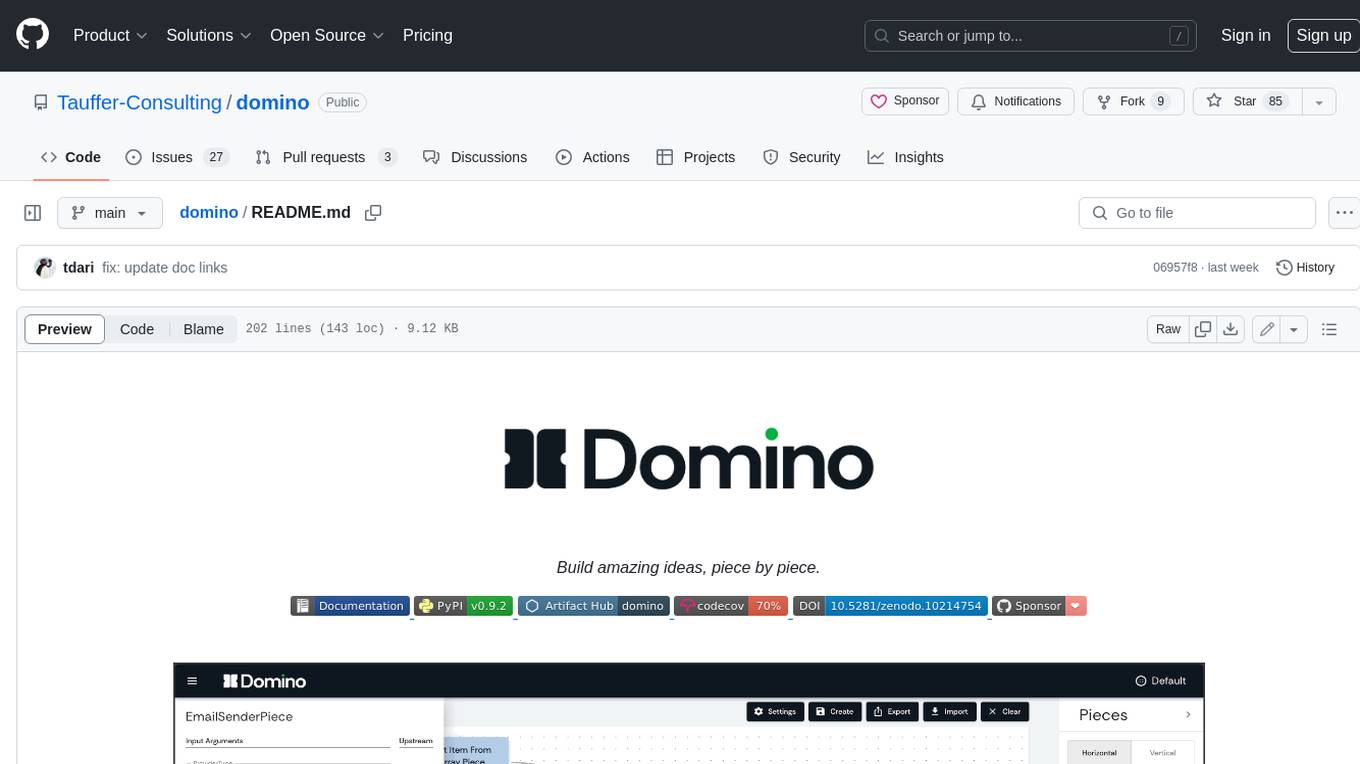
domino
Domino is an open source workflow management platform that provides an intuitive GUI for creating, editing, and monitoring workflows. It also offers a standard way of writing and publishing functional pieces that can be reused in multiple workflows. Domino is powered by Apache Airflow for top-tier workflows scheduling and monitoring.
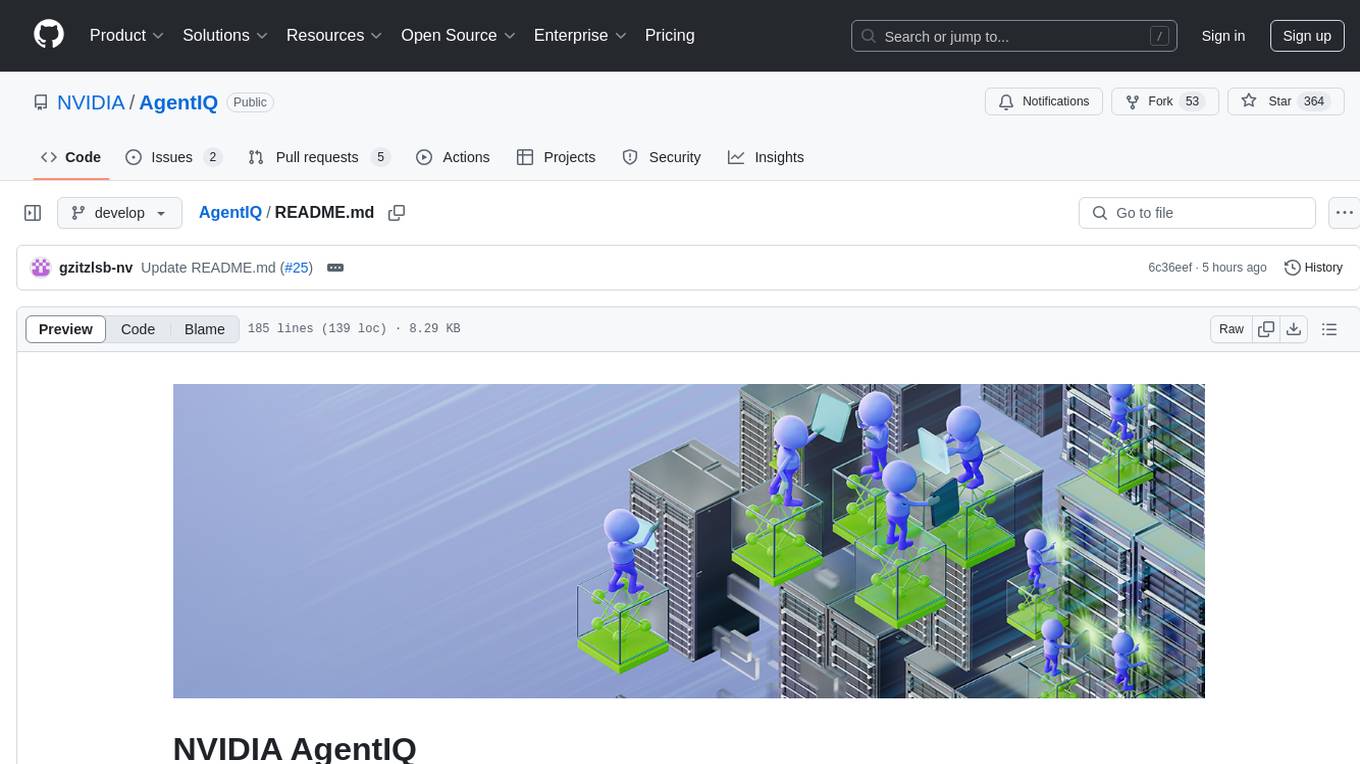
AgentIQ
AgentIQ is a flexible library designed to seamlessly integrate enterprise agents with various data sources and tools. It enables true composability by treating agents, tools, and workflows as simple function calls. With features like framework agnosticism, reusability, rapid development, profiling, observability, evaluation system, user interface, and MCP compatibility, AgentIQ empowers developers to move quickly, experiment freely, and ensure reliability across agent-driven projects.
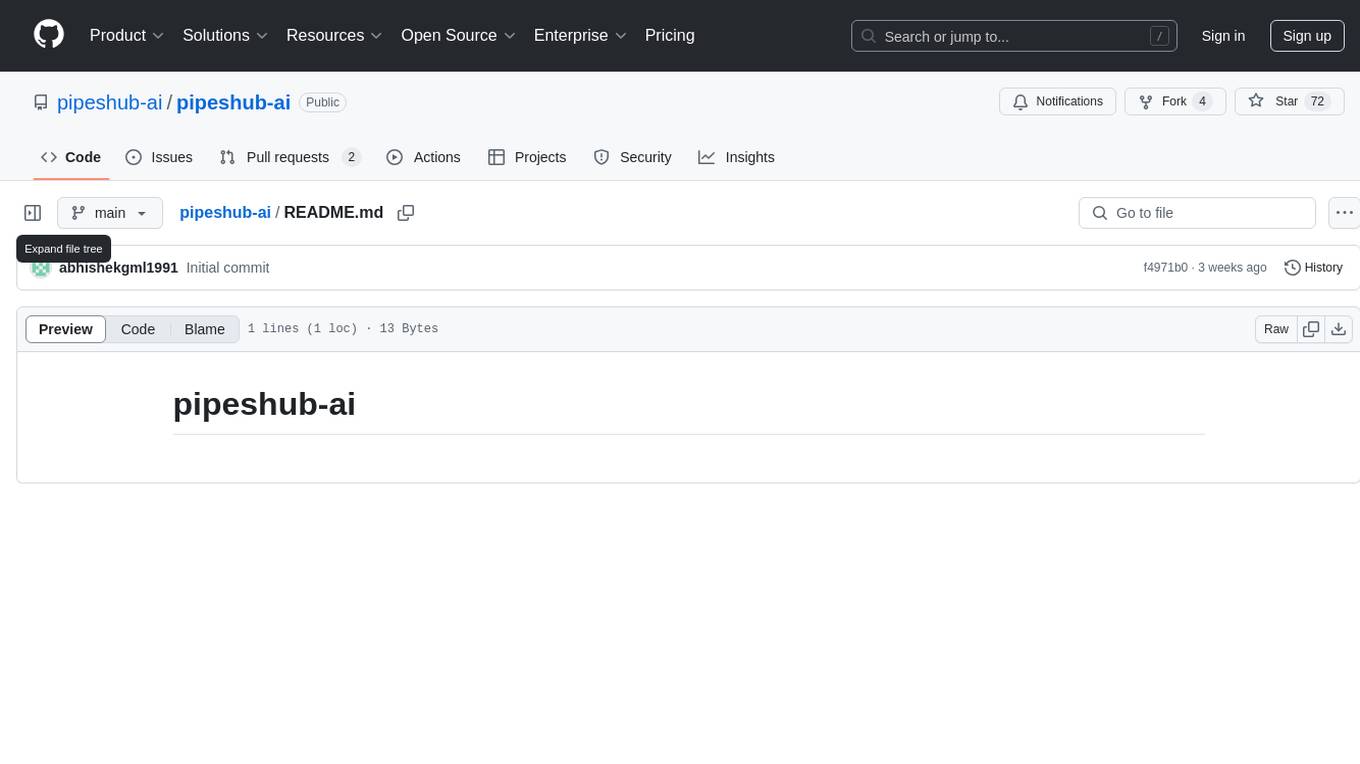
pipeshub-ai
Pipeshub-ai is a versatile tool for automating data pipelines in AI projects. It provides a user-friendly interface to design, deploy, and monitor complex data workflows, enabling seamless integration of various AI models and data sources. With Pipeshub-ai, users can easily create end-to-end pipelines for tasks such as data preprocessing, model training, and inference, streamlining the AI development process and improving productivity. The tool supports integration with popular AI frameworks and cloud services, making it suitable for both beginners and experienced AI practitioners.
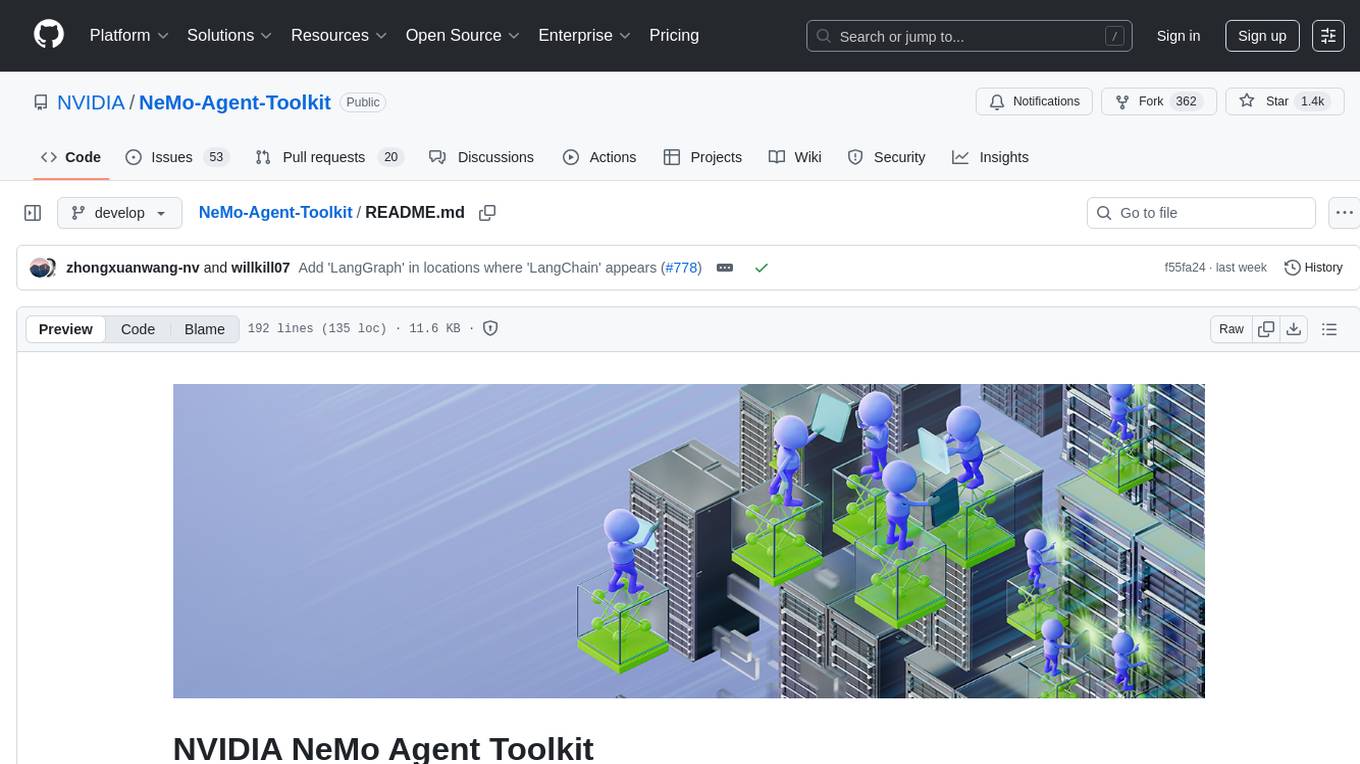
NeMo-Agent-Toolkit
NVIDIA NeMo Agent toolkit is a flexible, lightweight, and unifying library that allows you to easily connect existing enterprise agents to data sources and tools across any framework. It is framework agnostic, promotes reusability, enables rapid development, provides profiling capabilities, offers observability features, includes an evaluation system, features a user interface for interaction, and supports the Model Context Protocol (MCP). With NeMo Agent toolkit, users can move quickly, experiment freely, and ensure reliability across all agent-driven projects.
20 - OpenAI Gpts
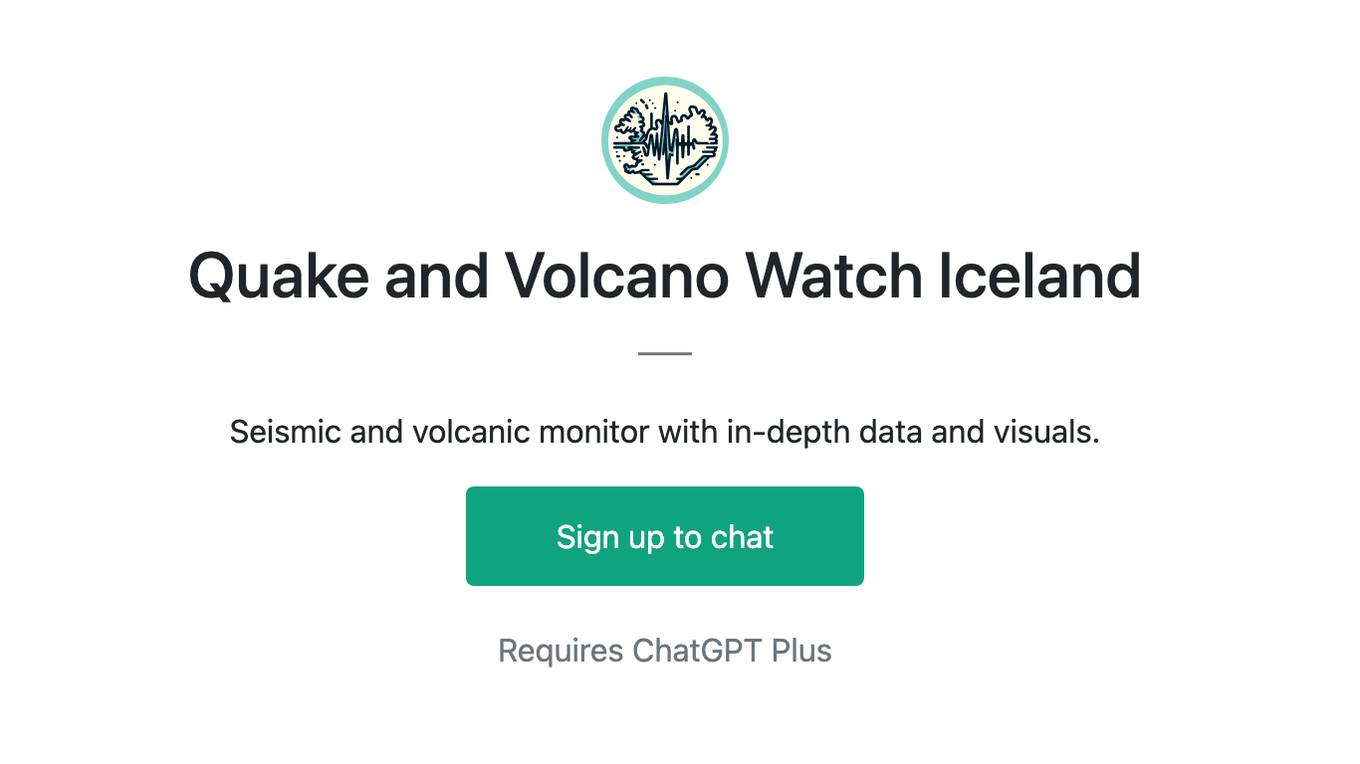
Quake and Volcano Watch Iceland
Seismic and volcanic monitor with in-depth data and visuals.
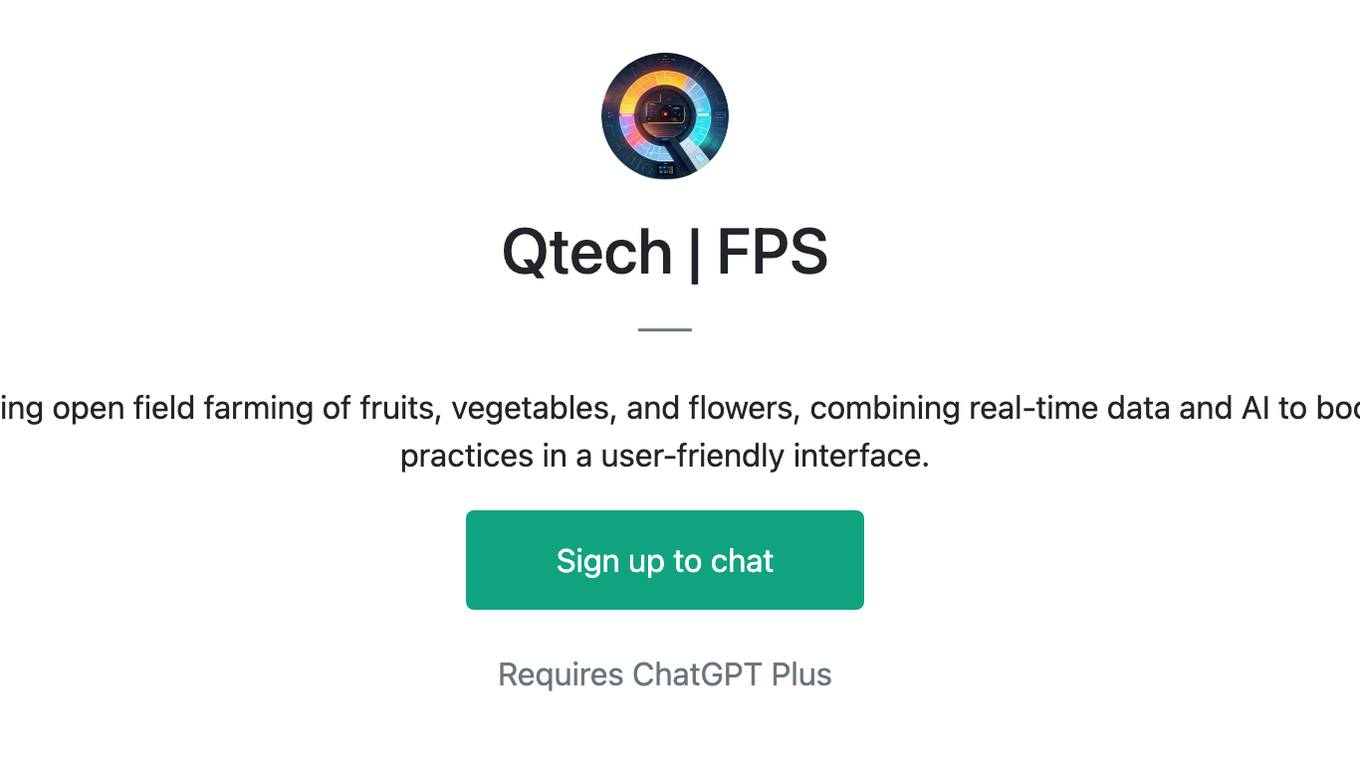
Qtech | FPS
Frost Protection System is an AI bot optimizing open field farming of fruits, vegetables, and flowers, combining real-time data and AI to boost yield, cut costs, and foster sustainable practices in a user-friendly interface.
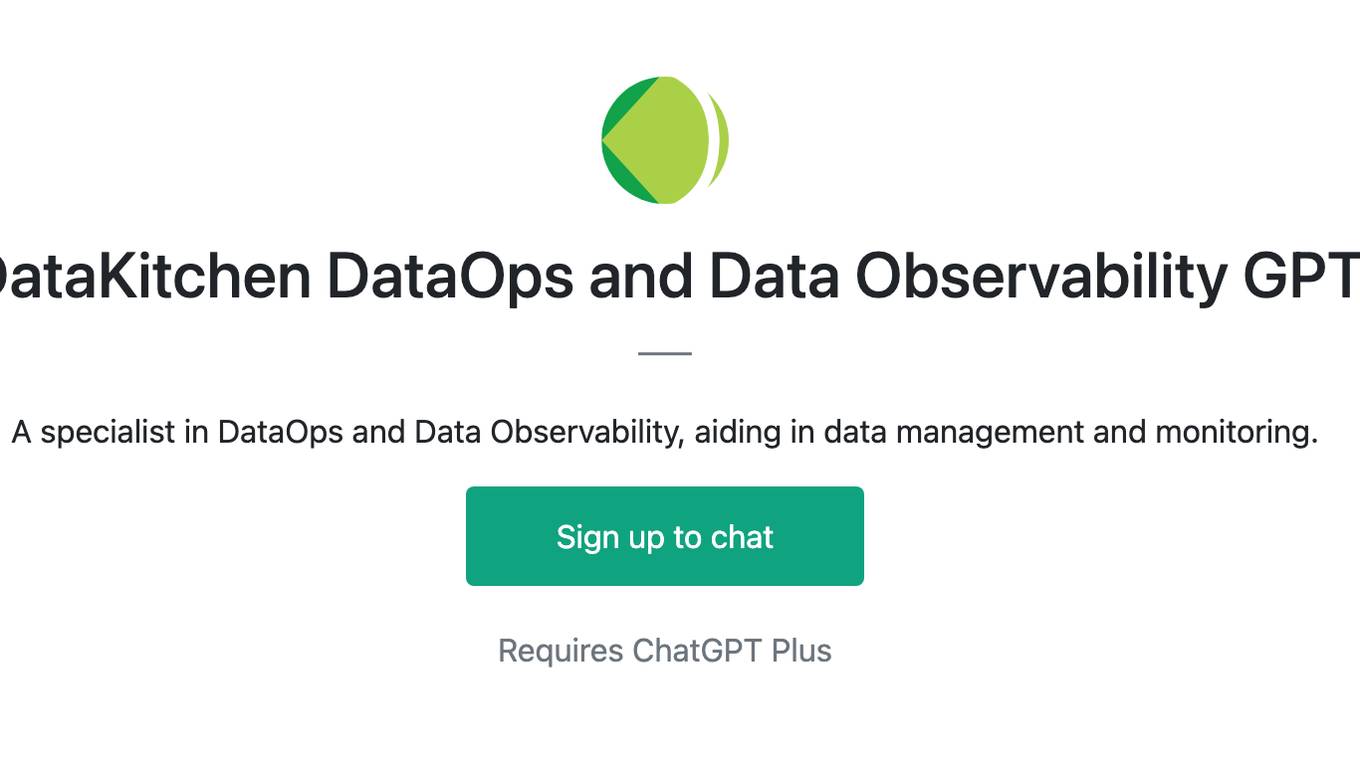
DataKitchen DataOps and Data Observability GPT
A specialist in DataOps and Data Observability, aiding in data management and monitoring.

Financial Cybersecurity Analyst - Lockley Cash v1
stunspot's advisor for all things Financial Cybersec
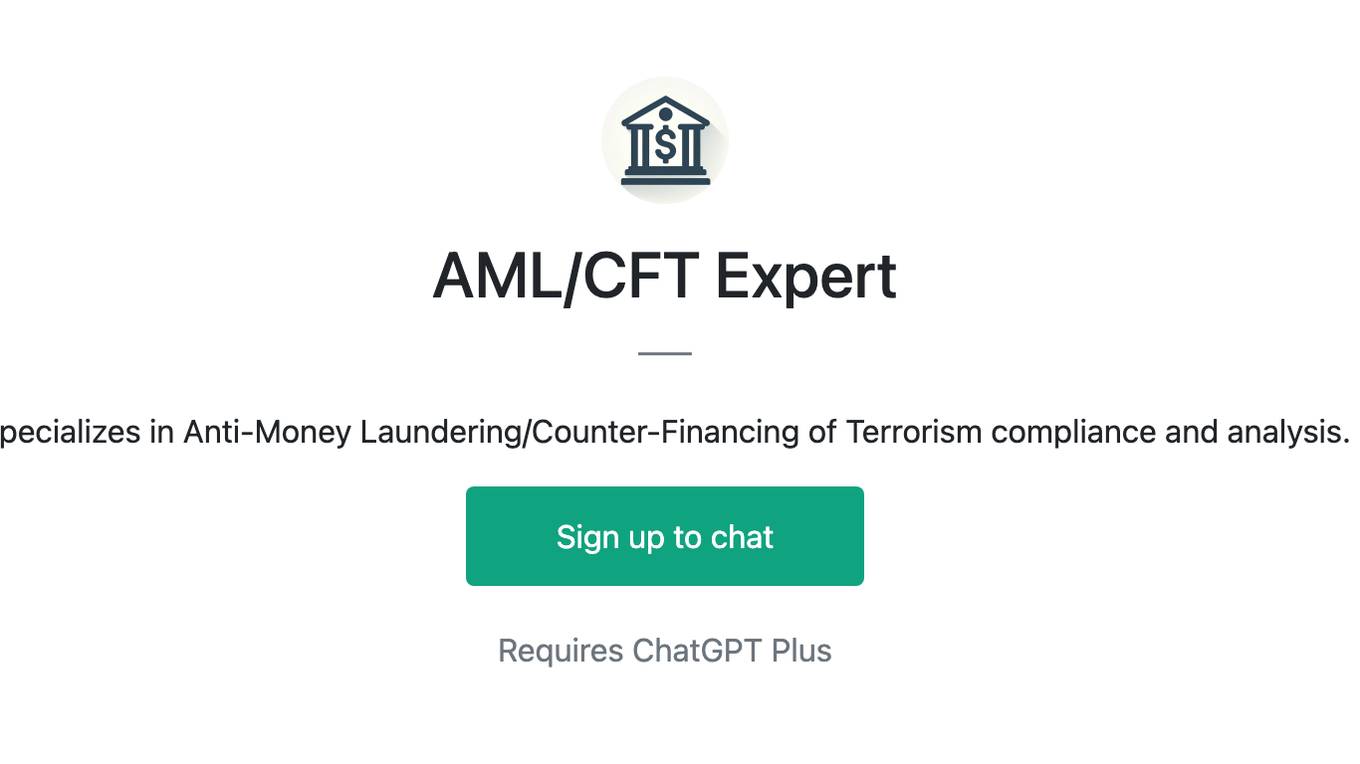
AML/CFT Expert
Specializes in Anti-Money Laundering/Counter-Financing of Terrorism compliance and analysis.
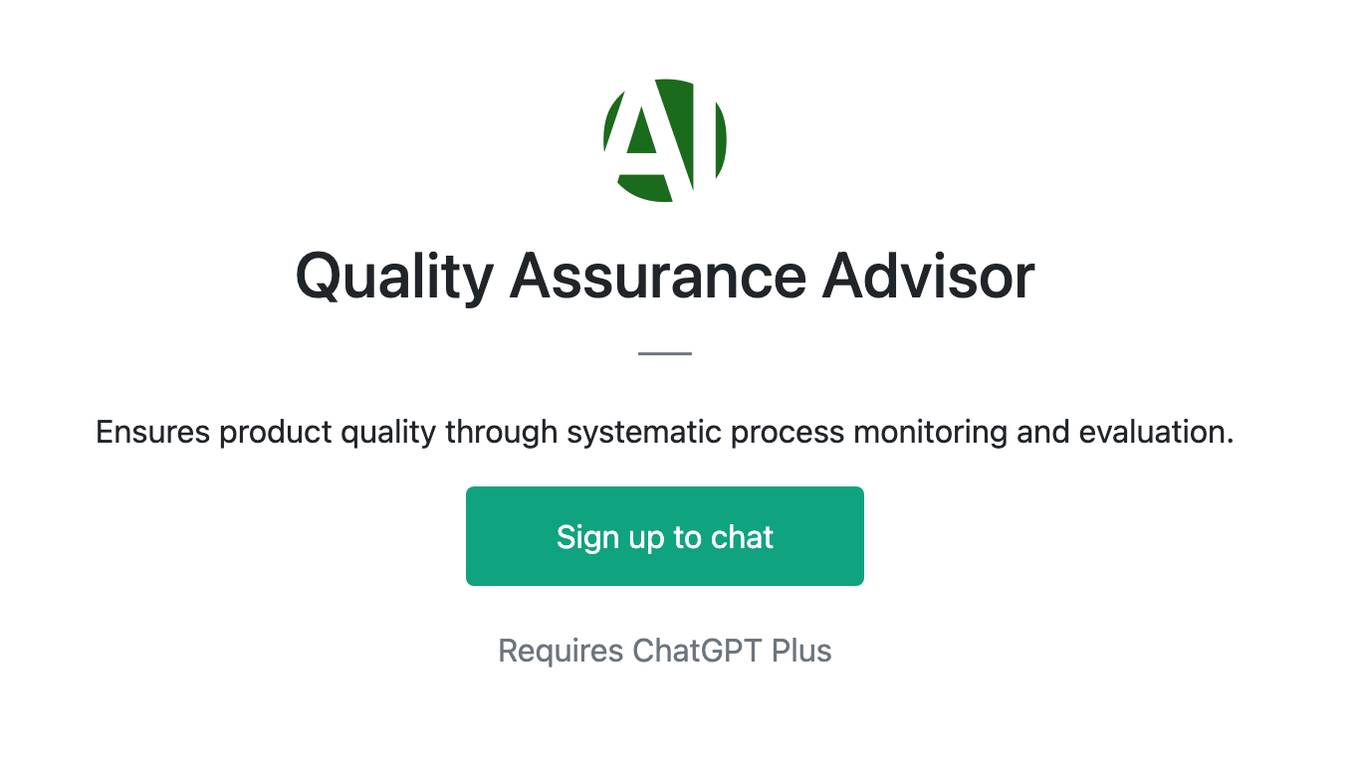
Quality Assurance Advisor
Ensures product quality through systematic process monitoring and evaluation.
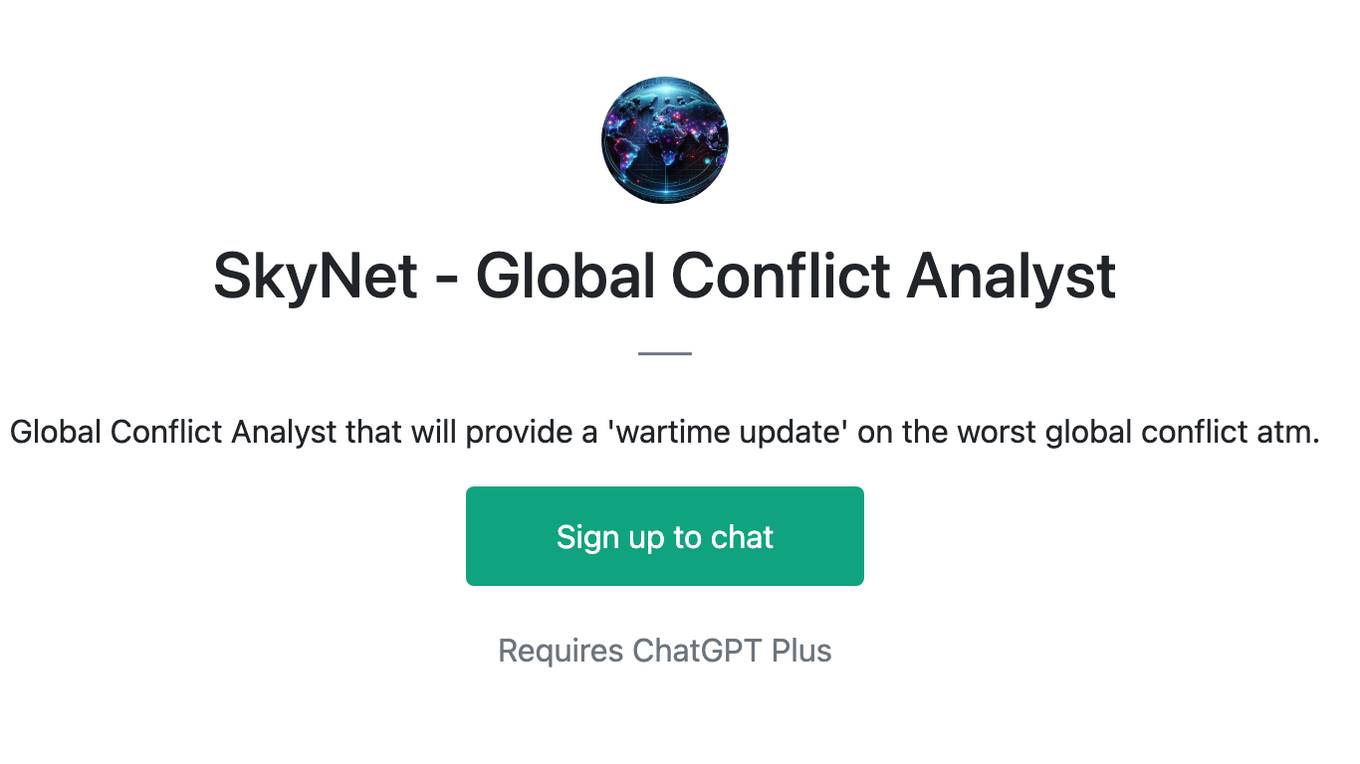
SkyNet - Global Conflict Analyst
Global Conflict Analyst that will provide a 'wartime update' on the worst global conflict atm.
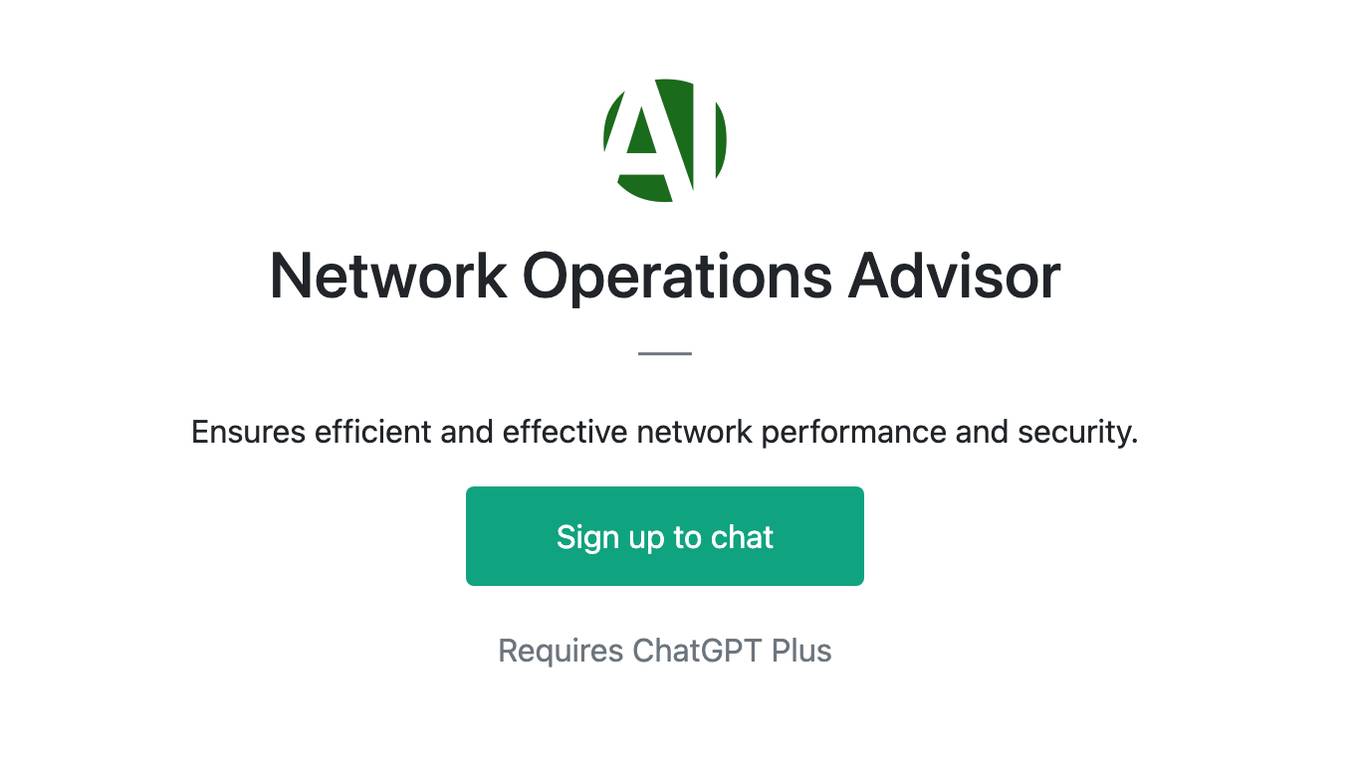
Network Operations Advisor
Ensures efficient and effective network performance and security.
